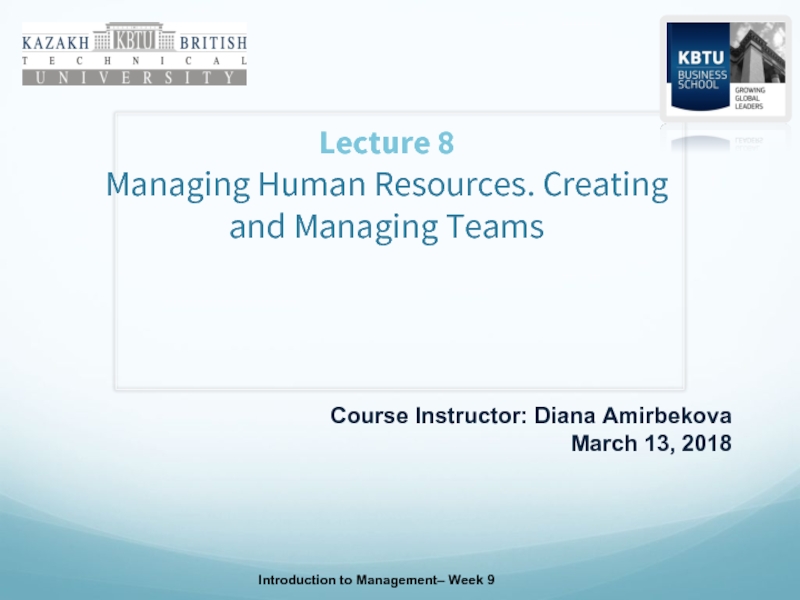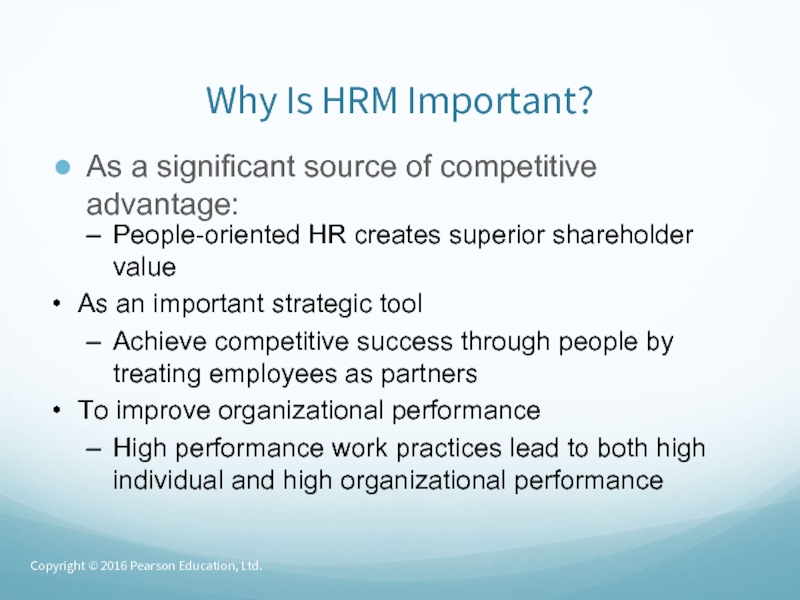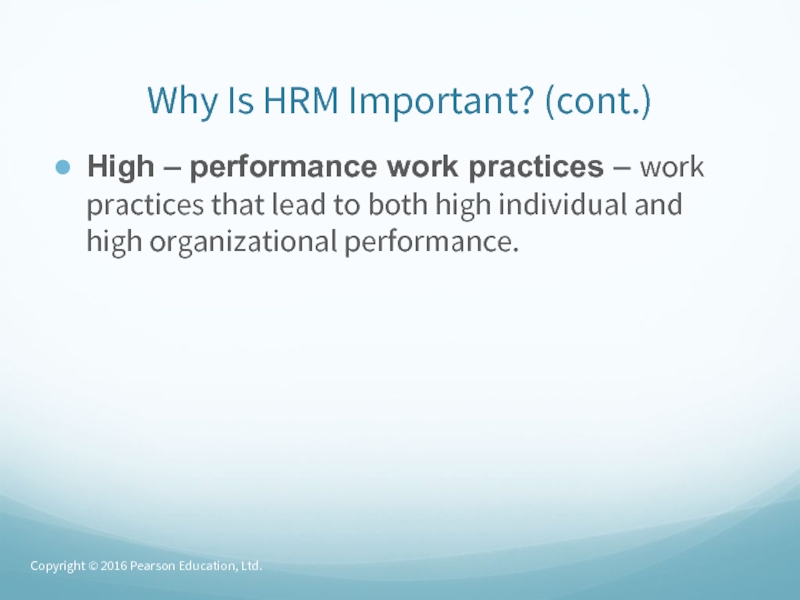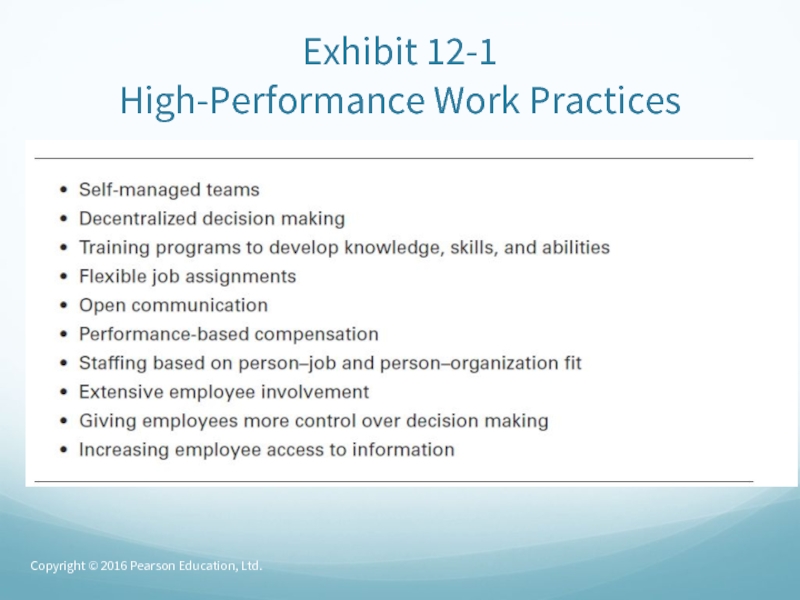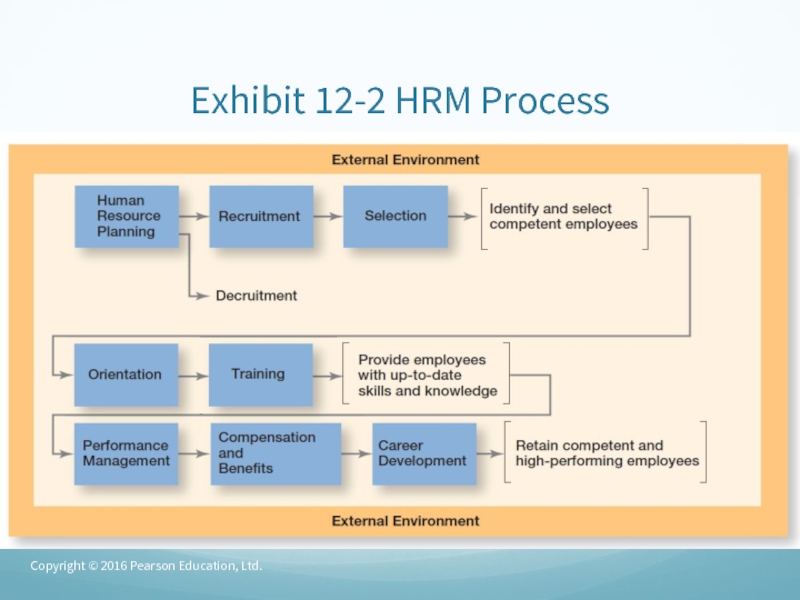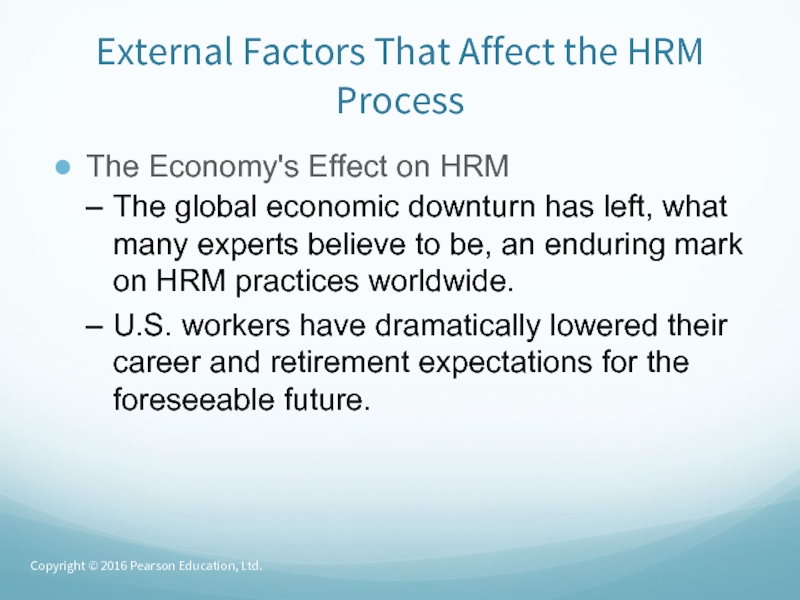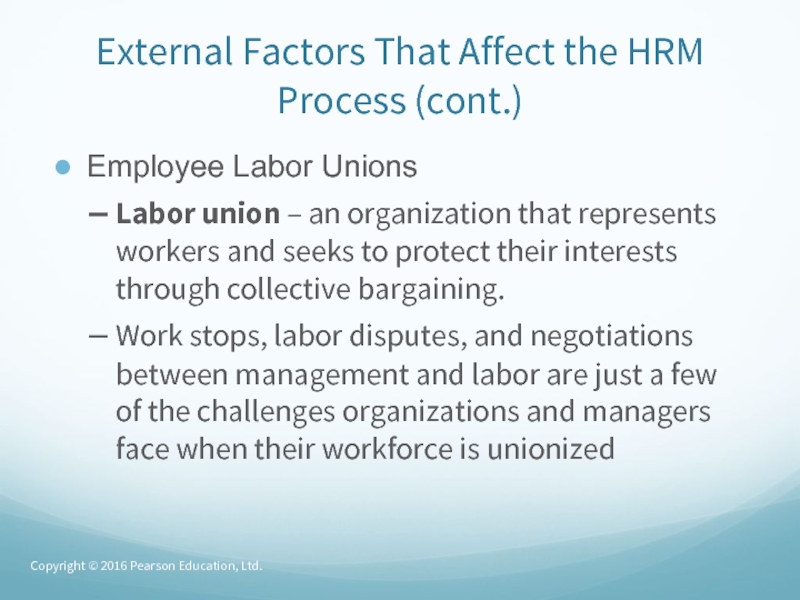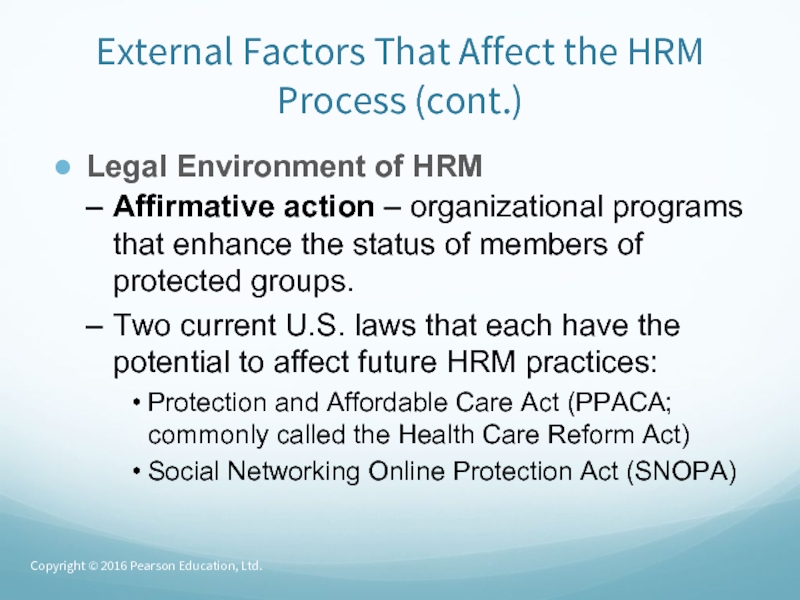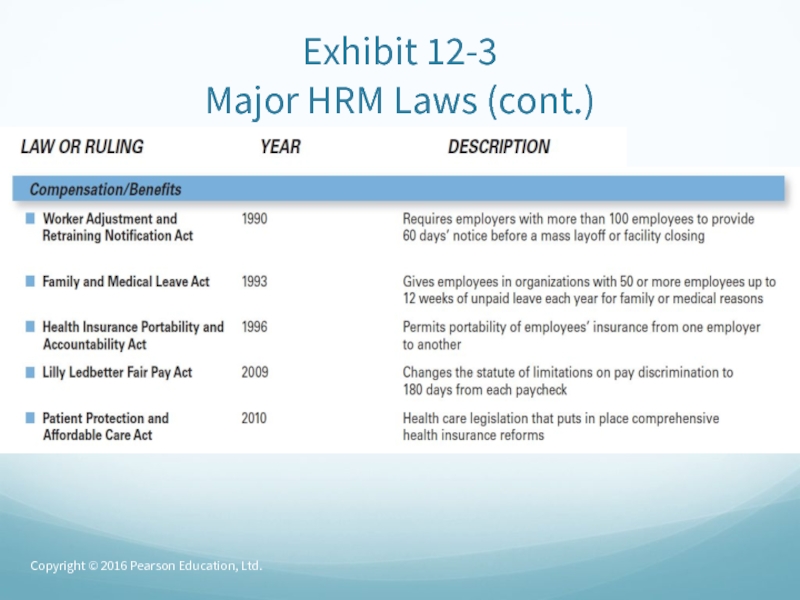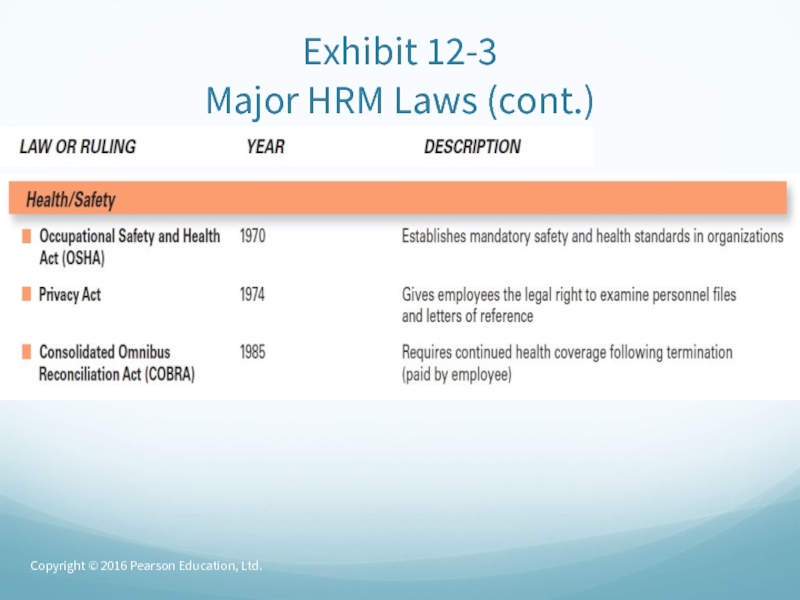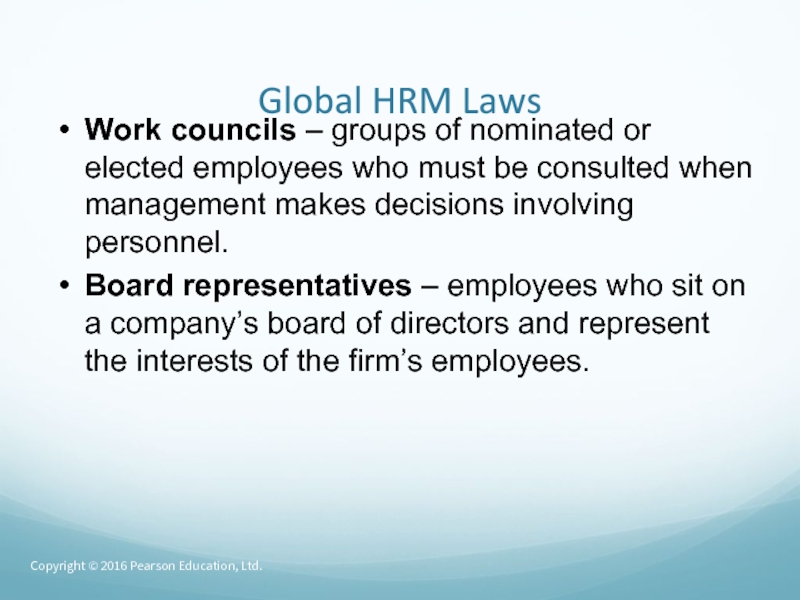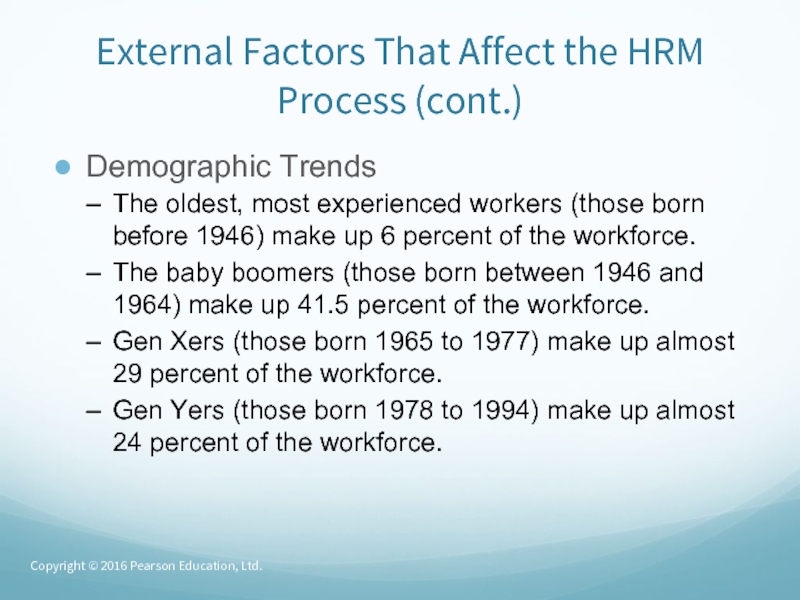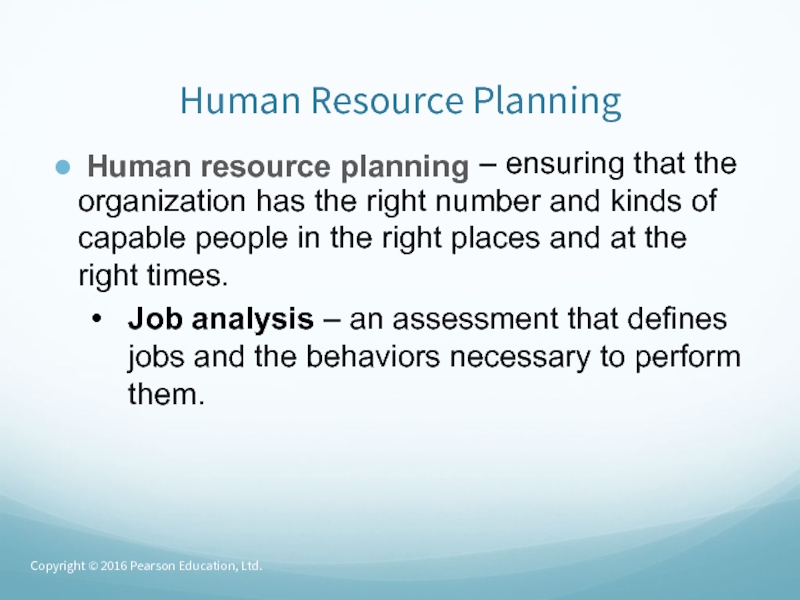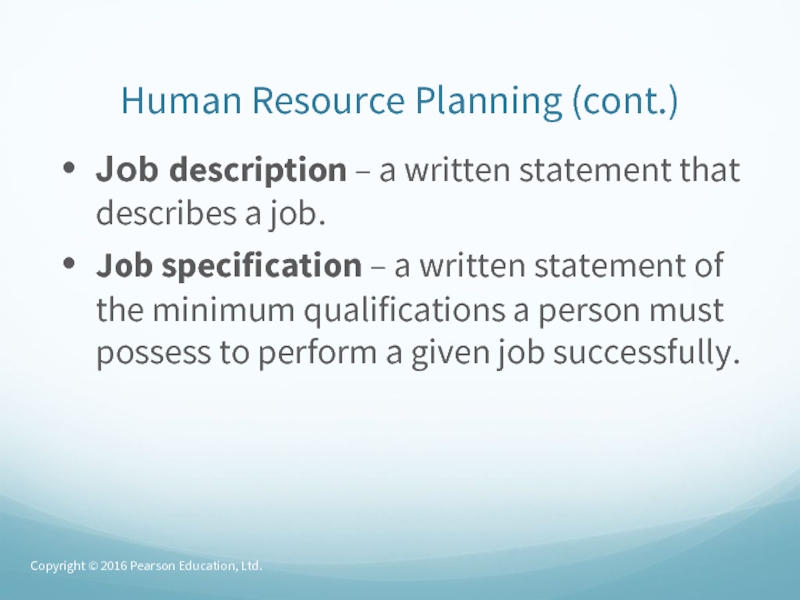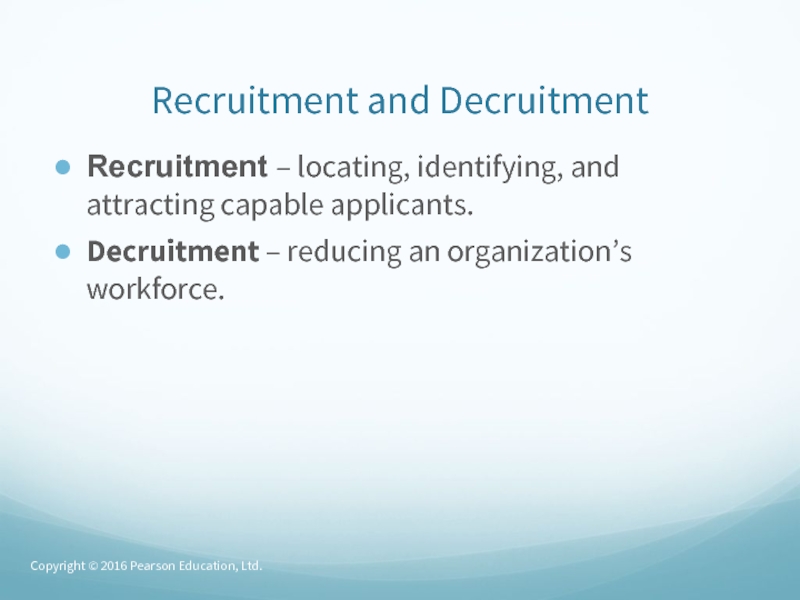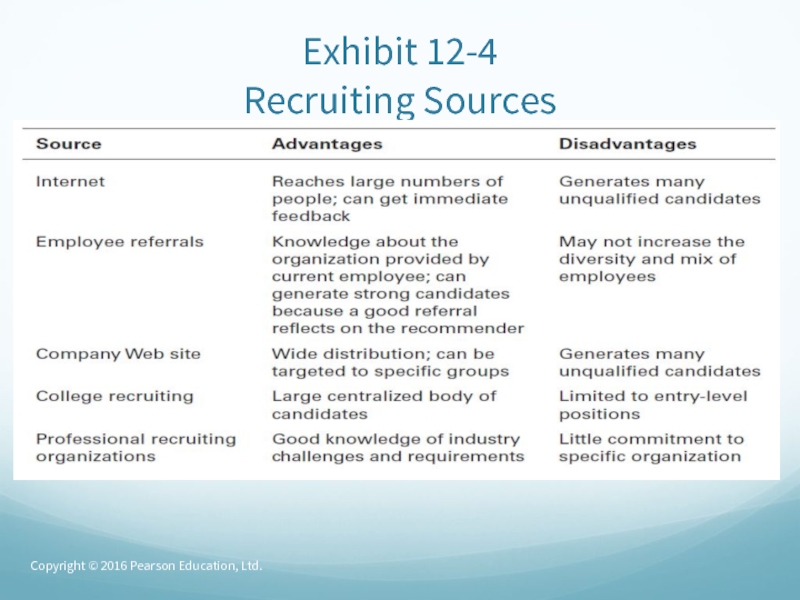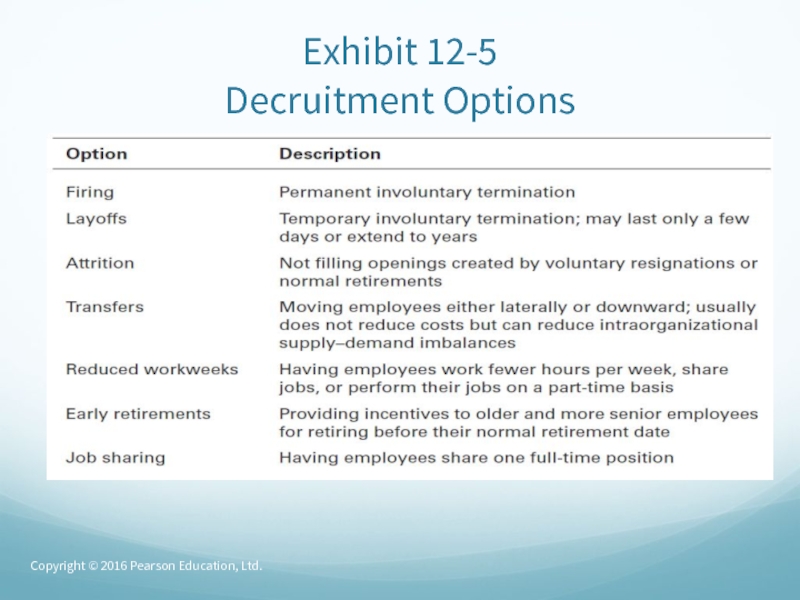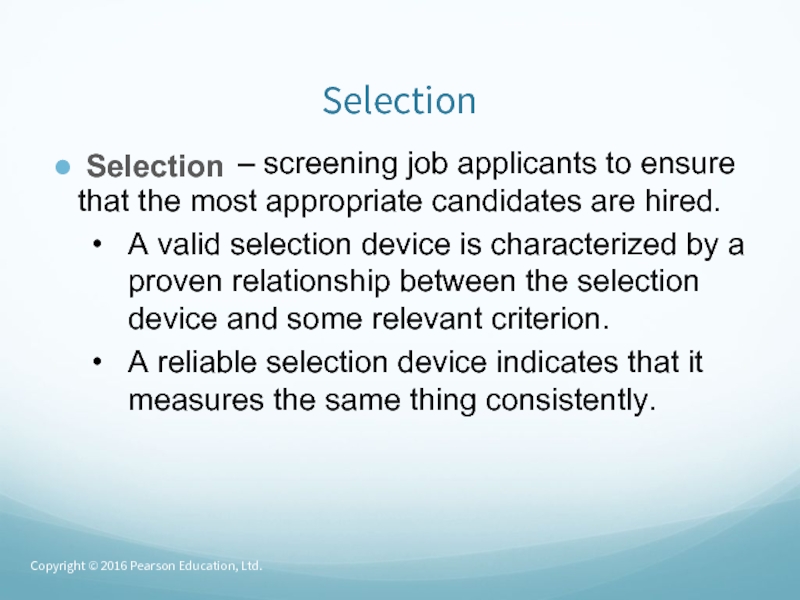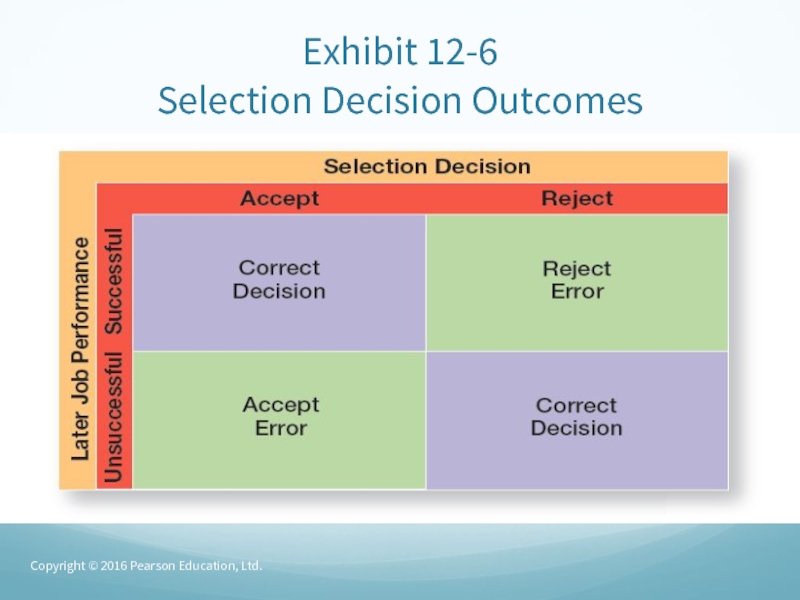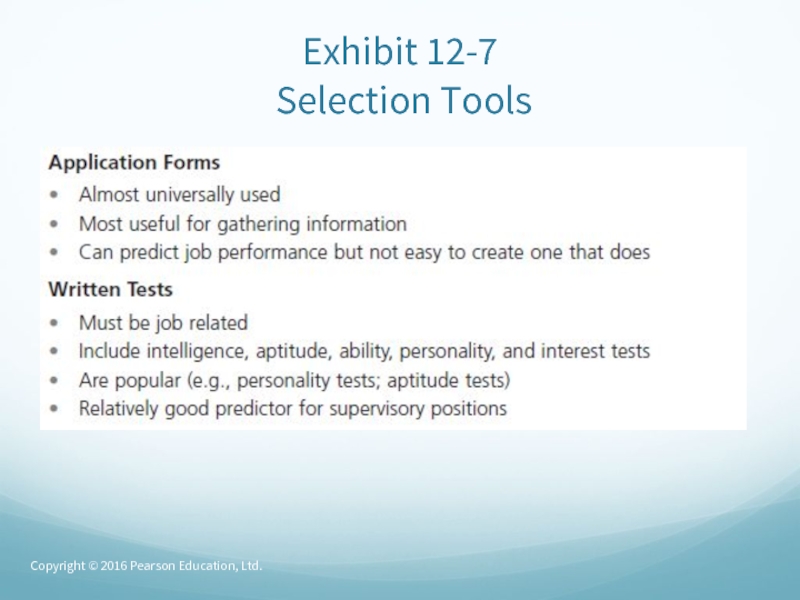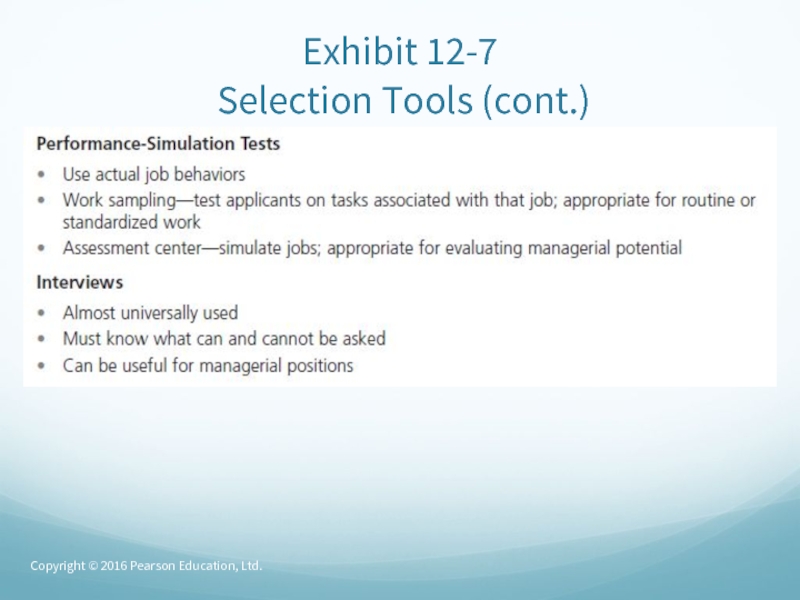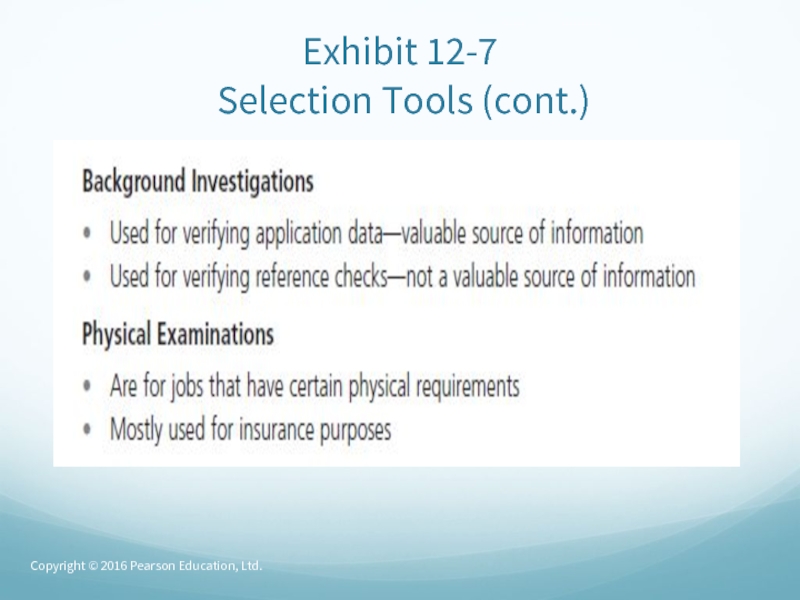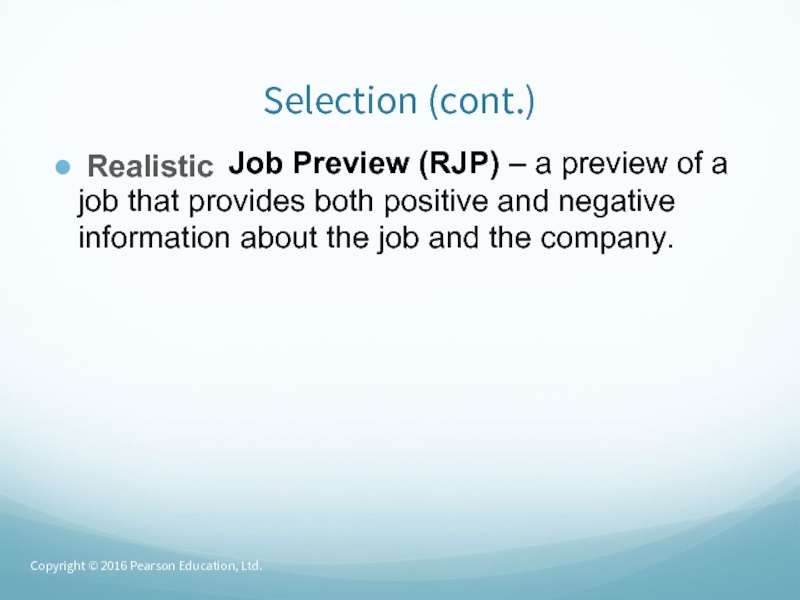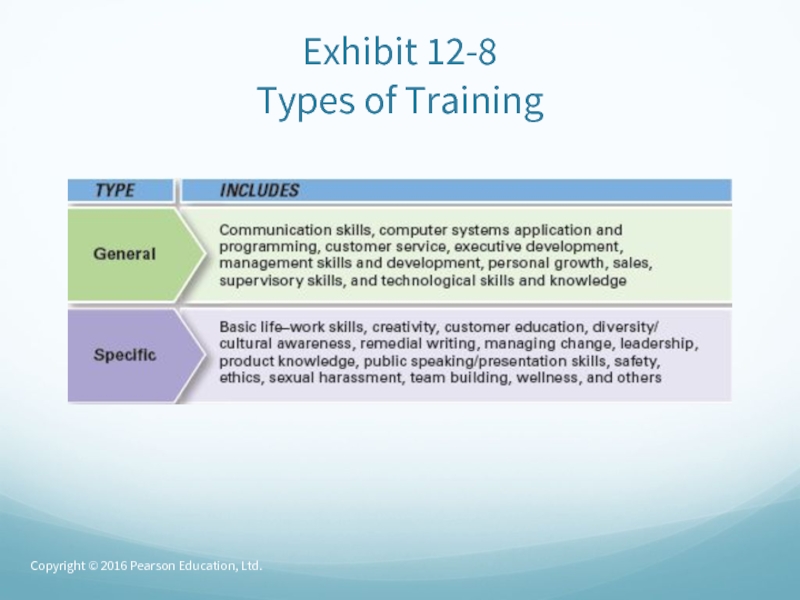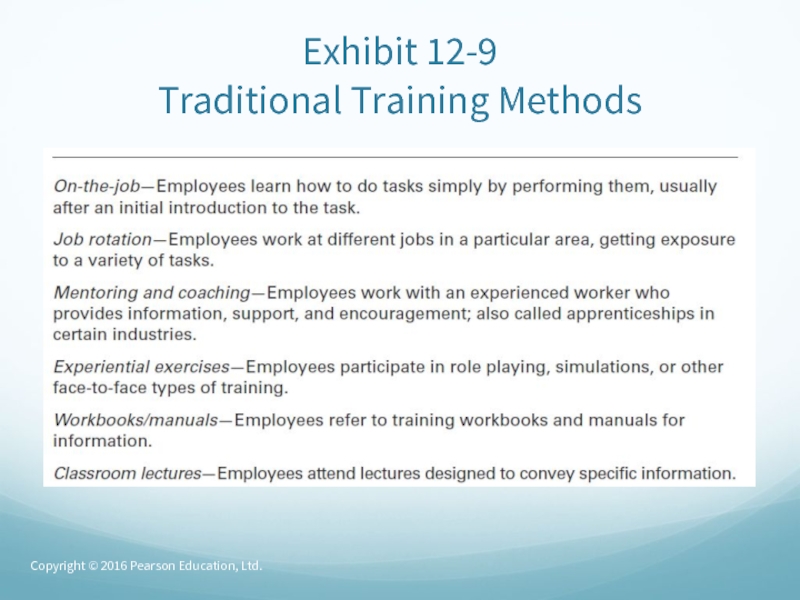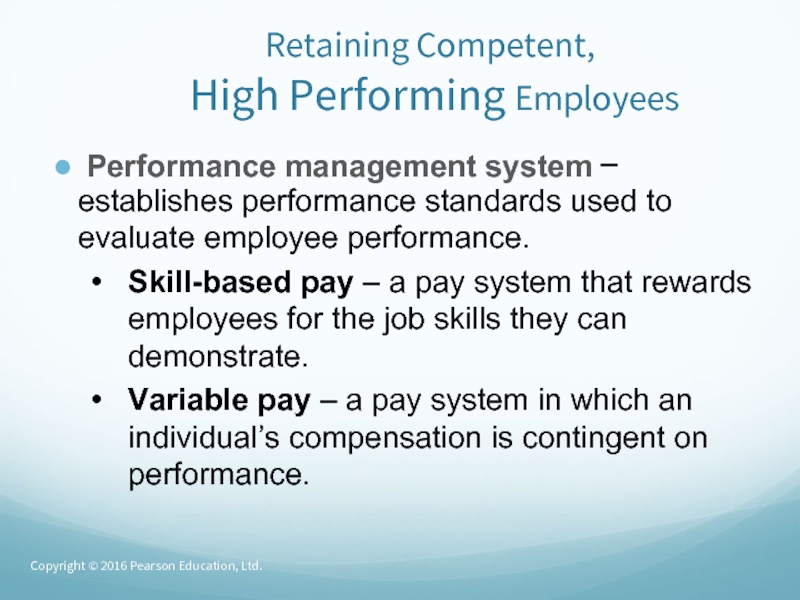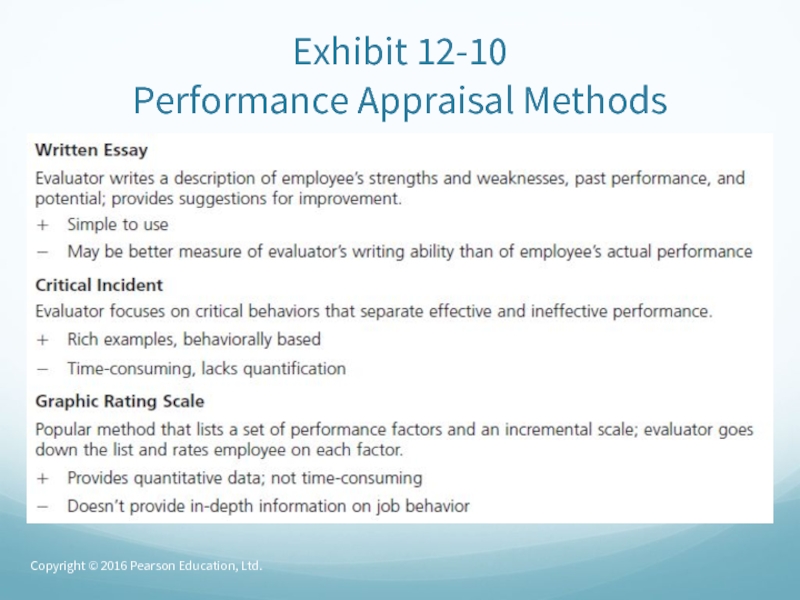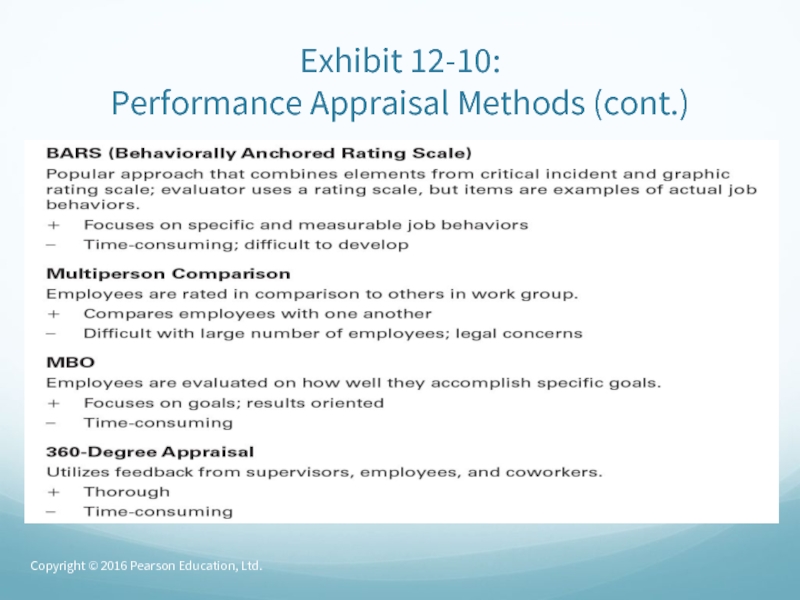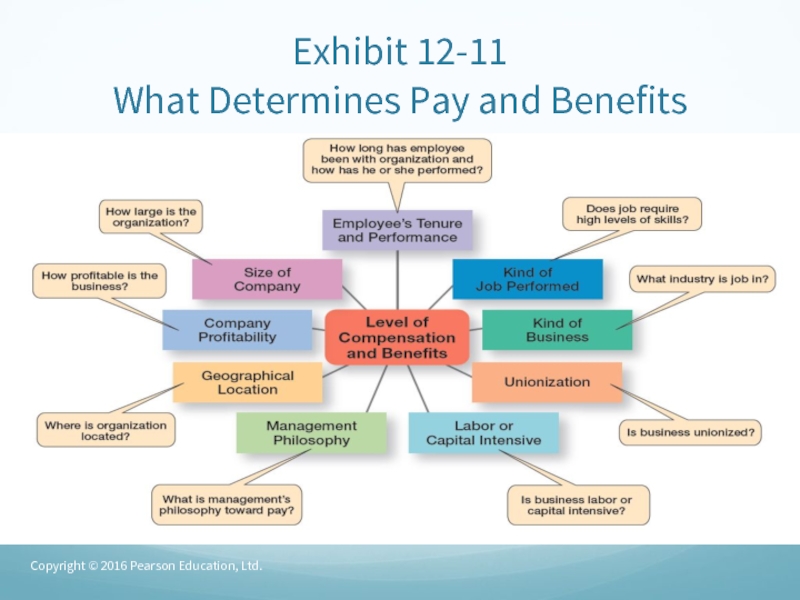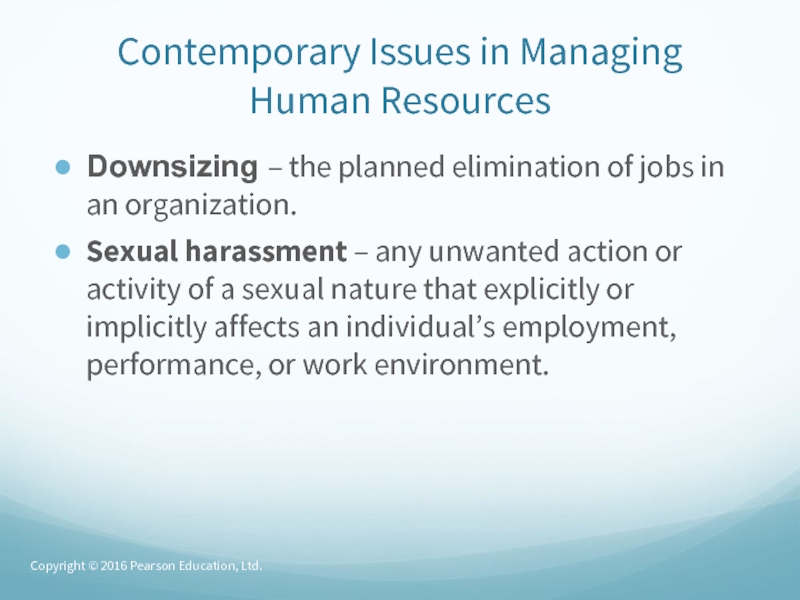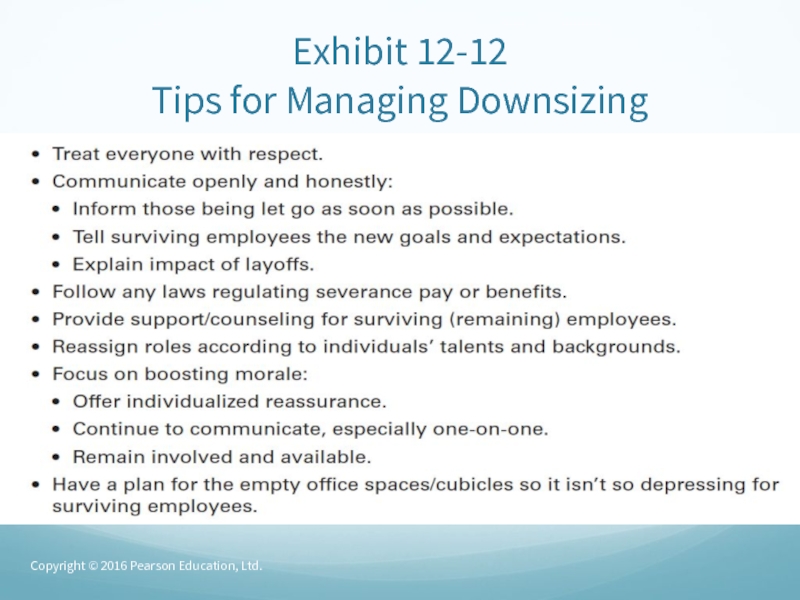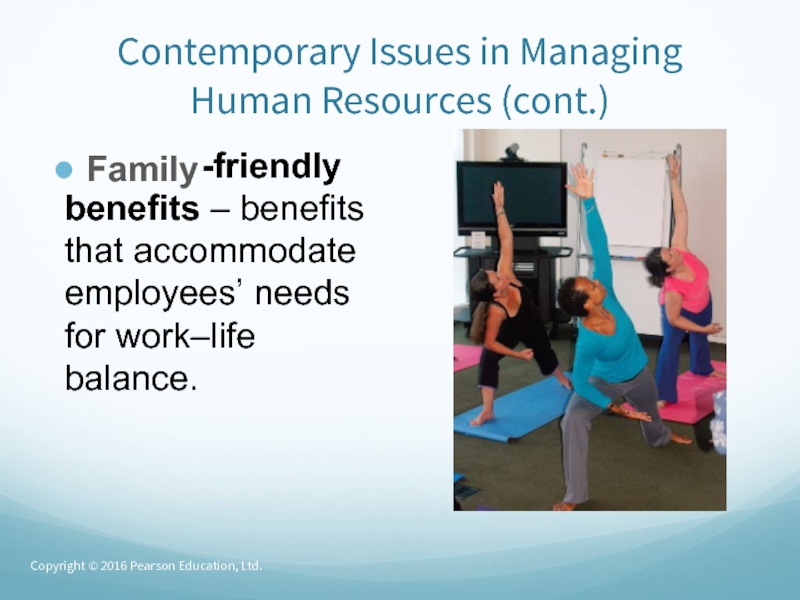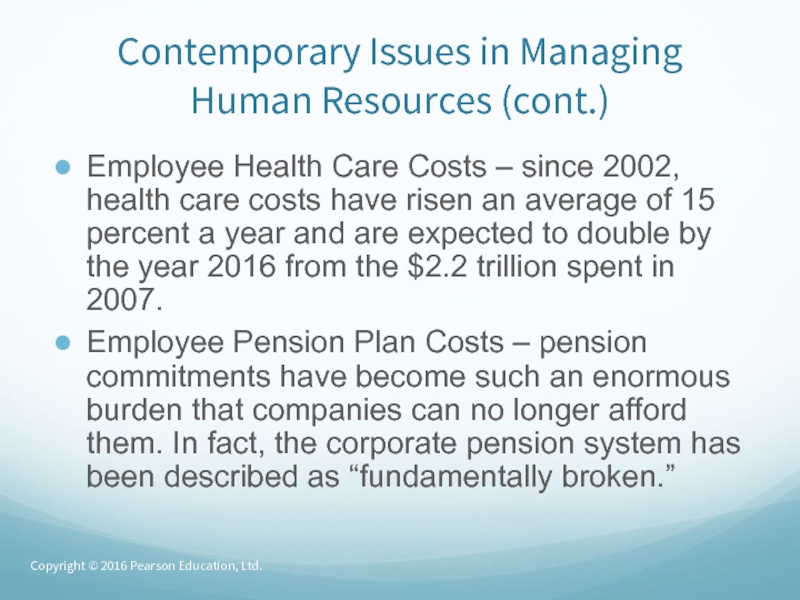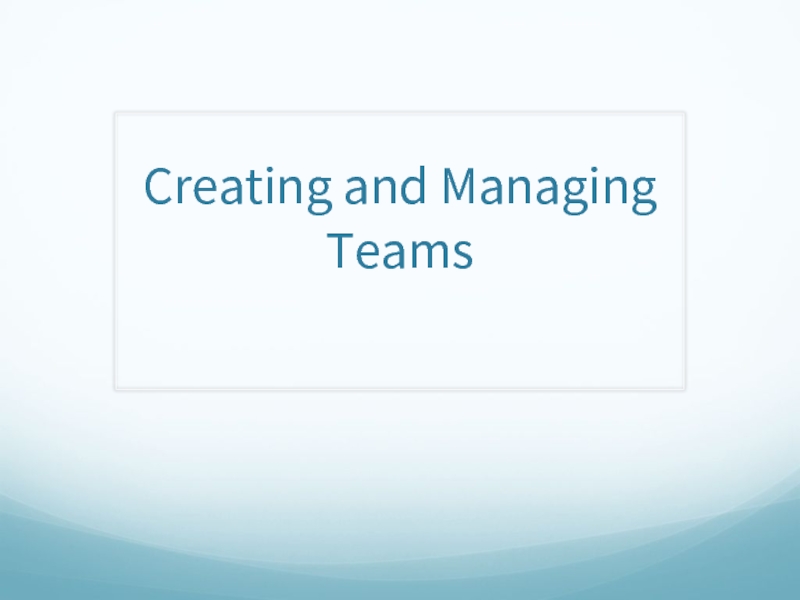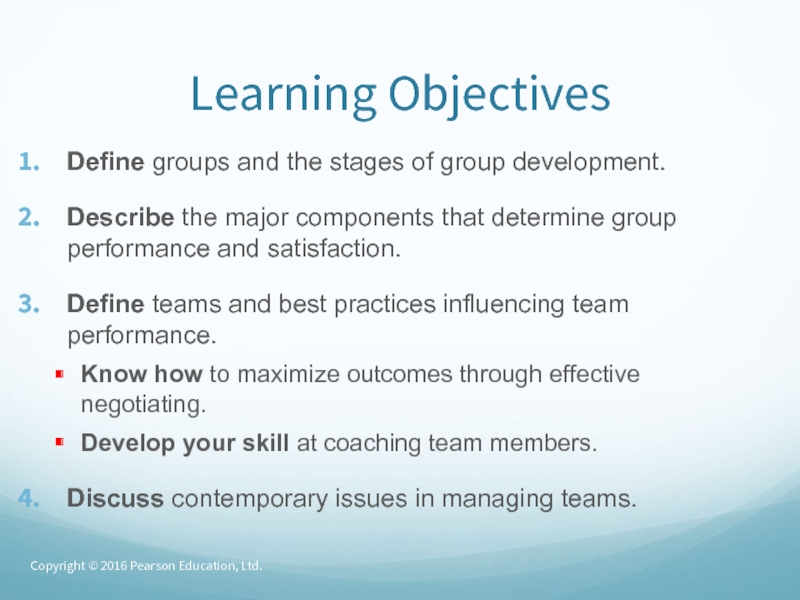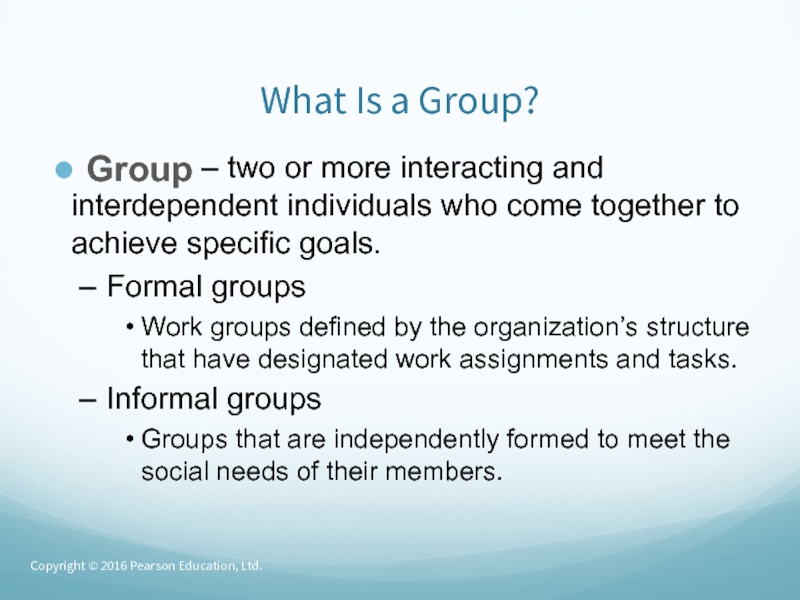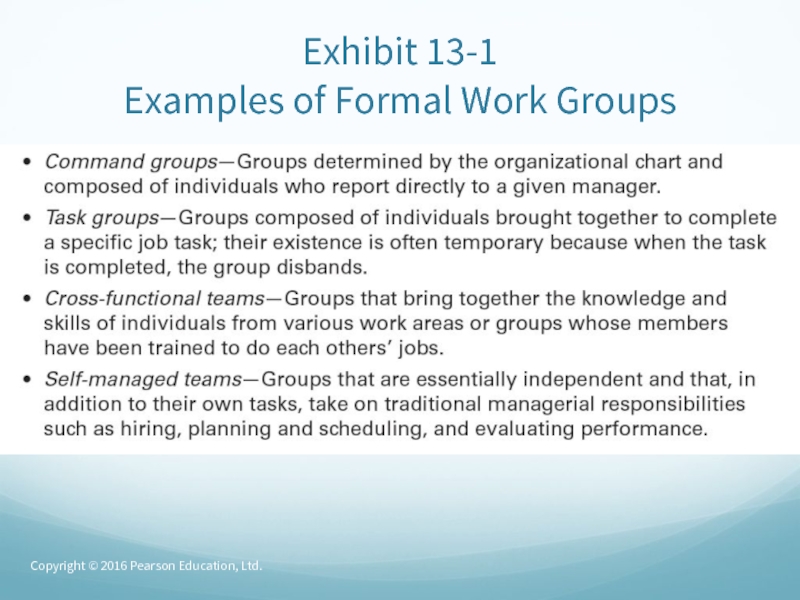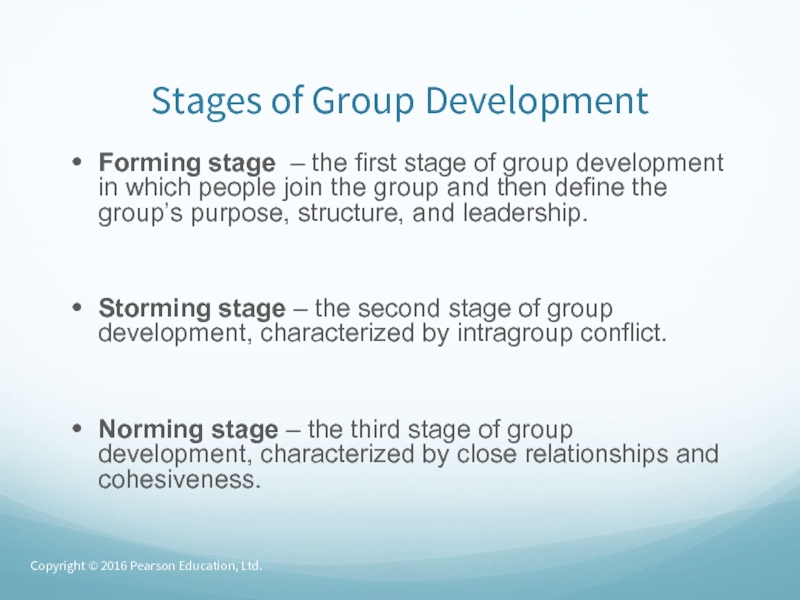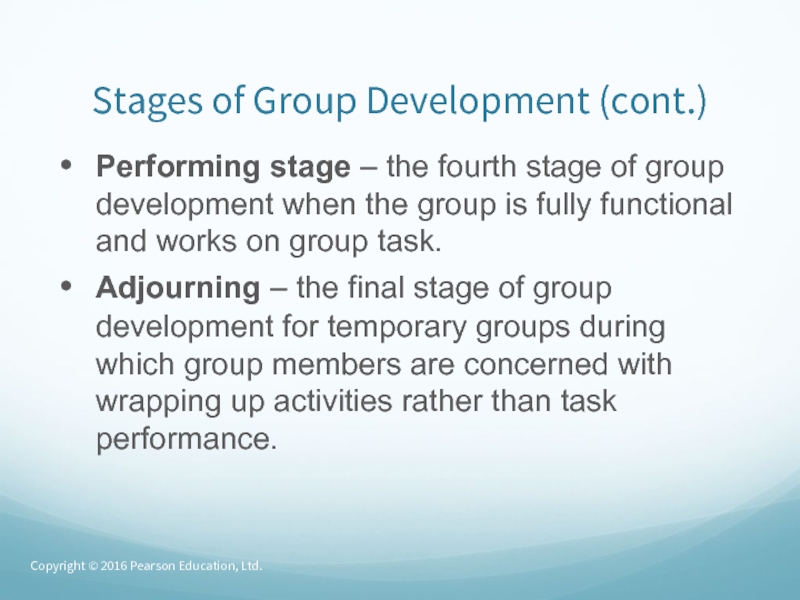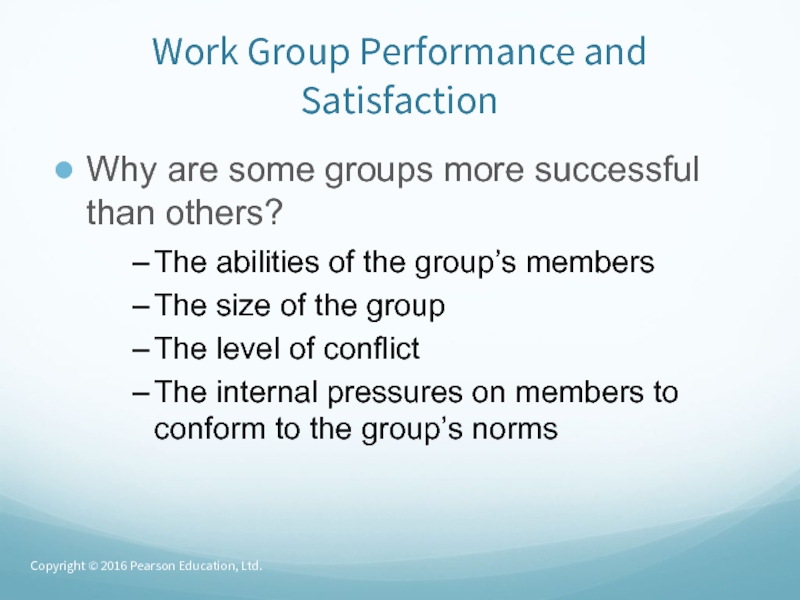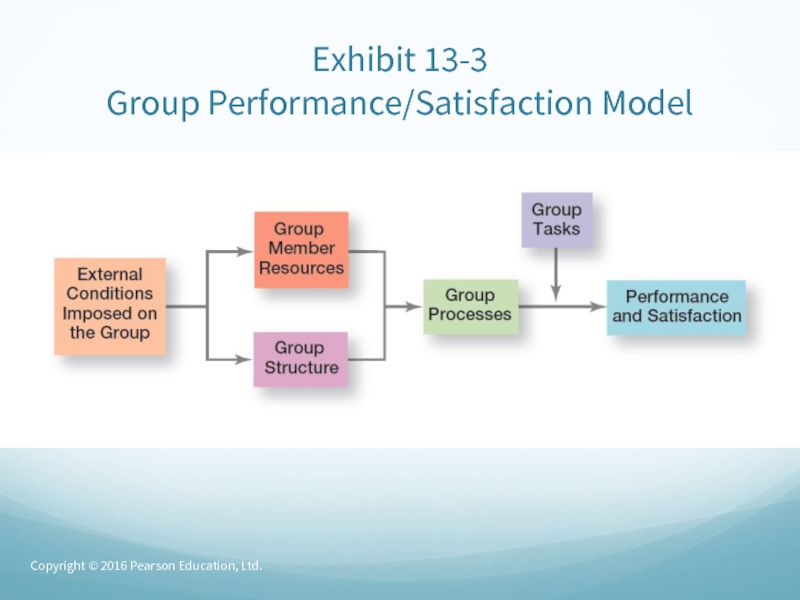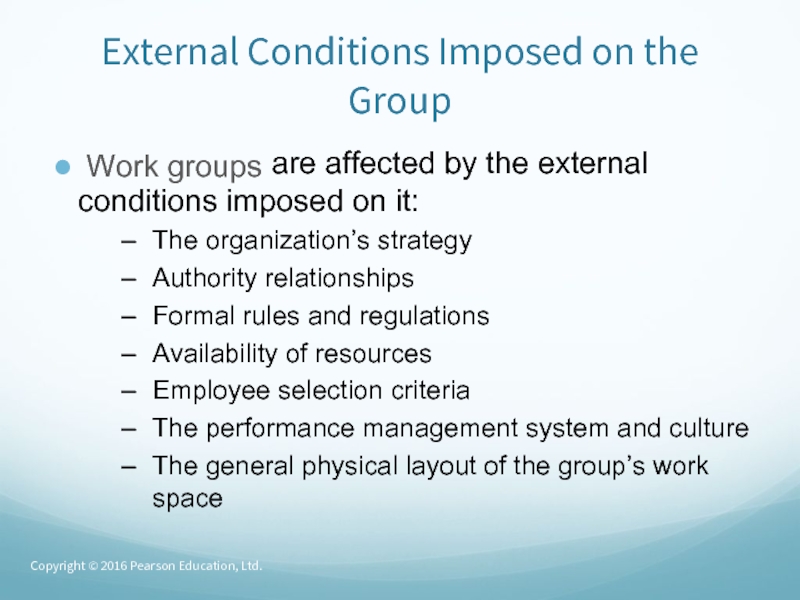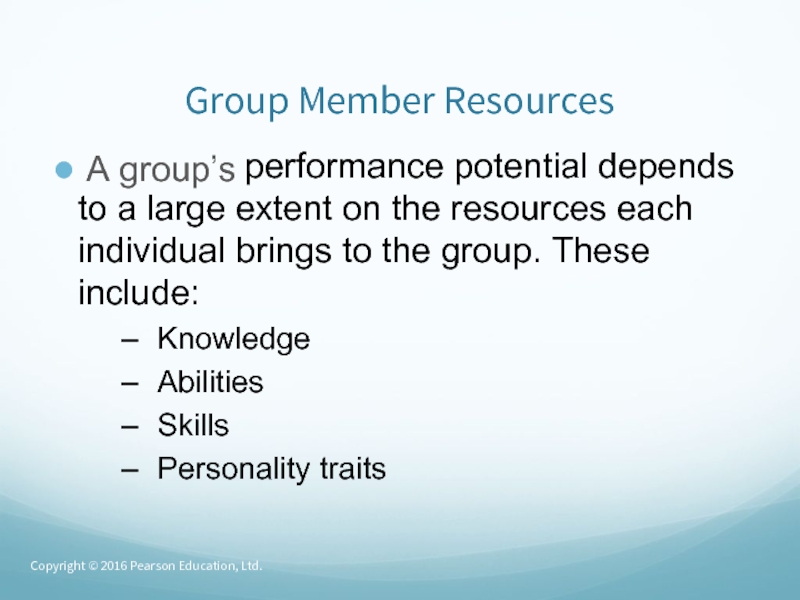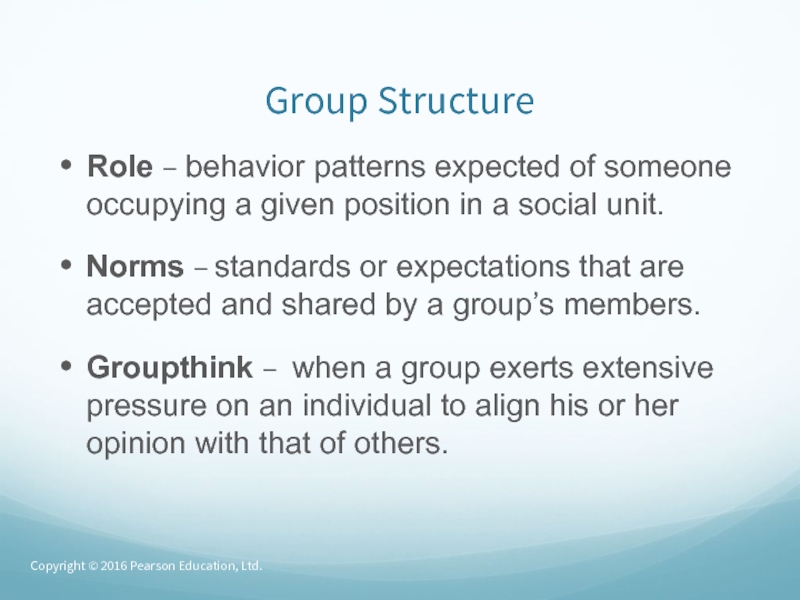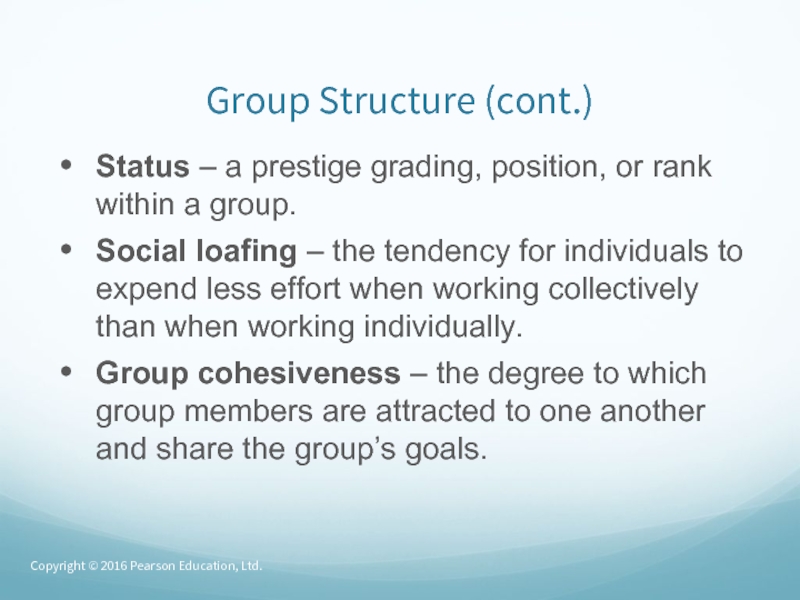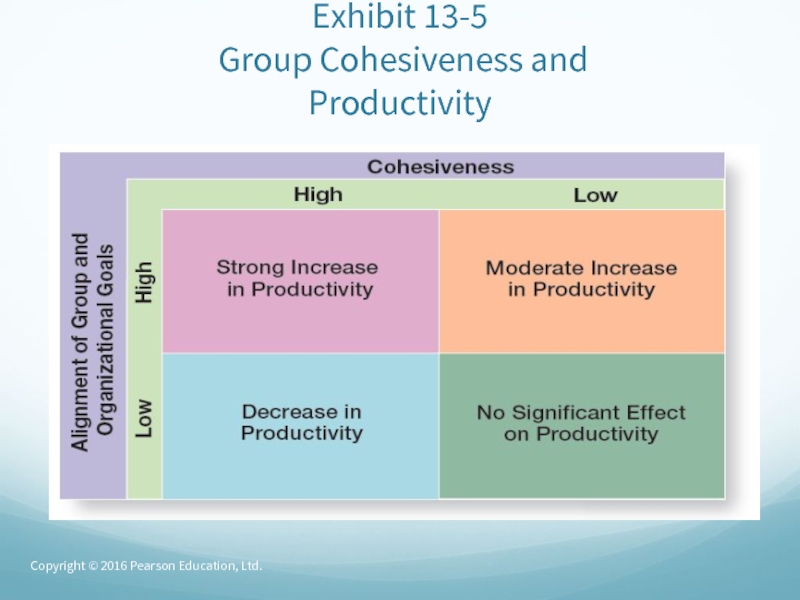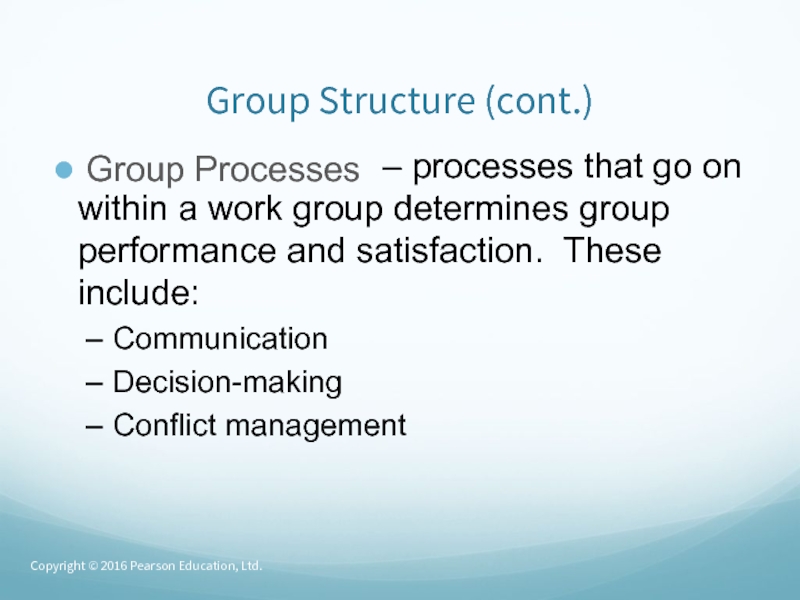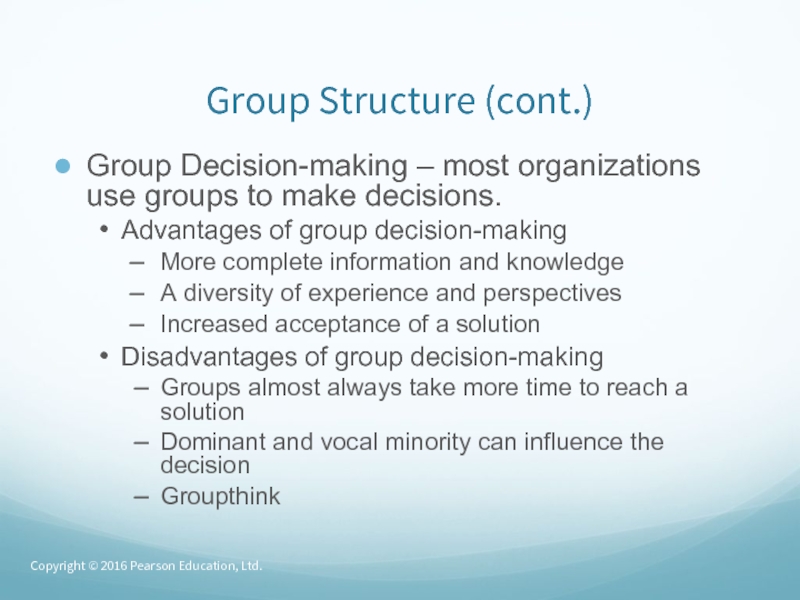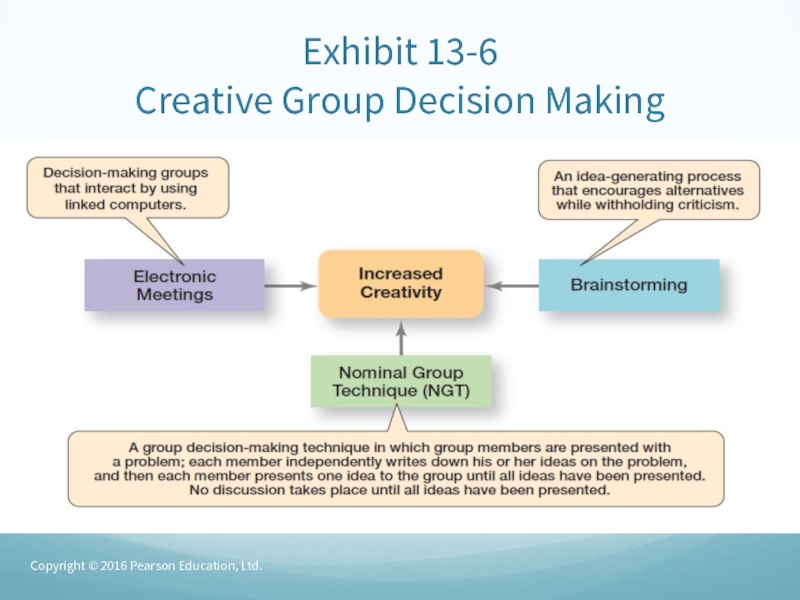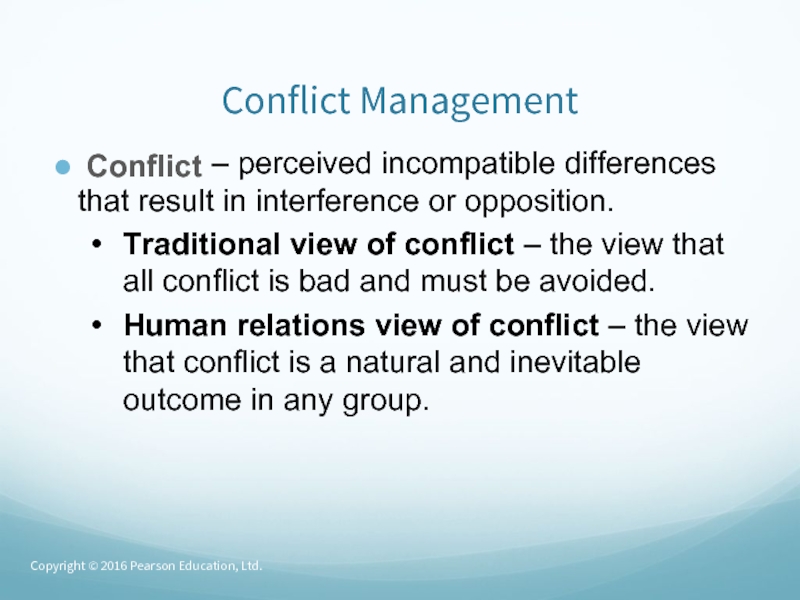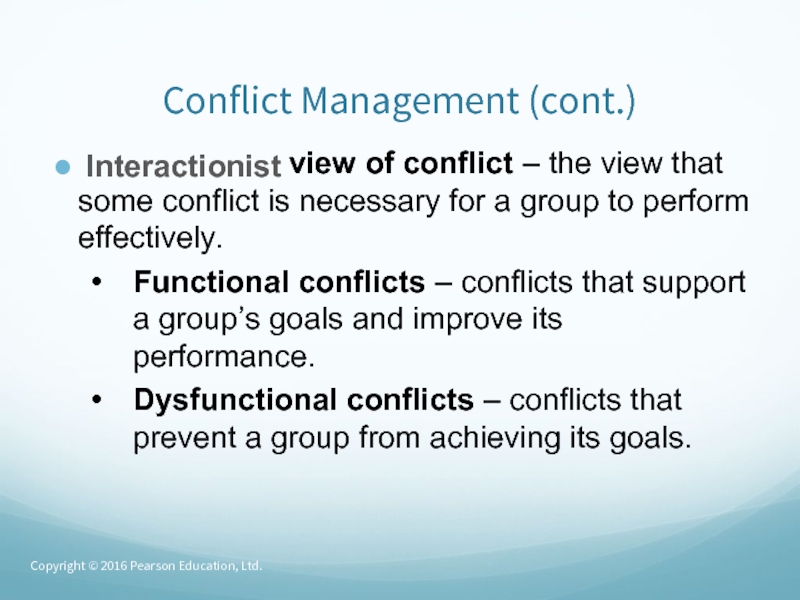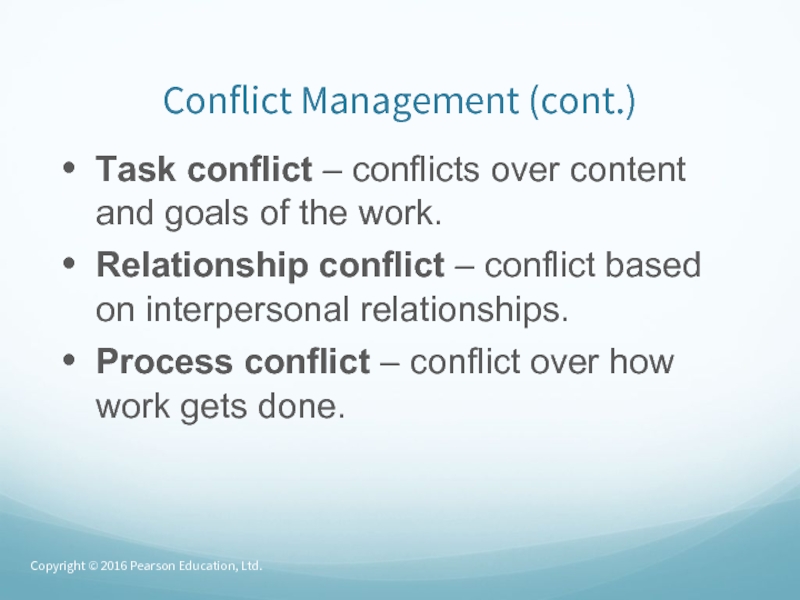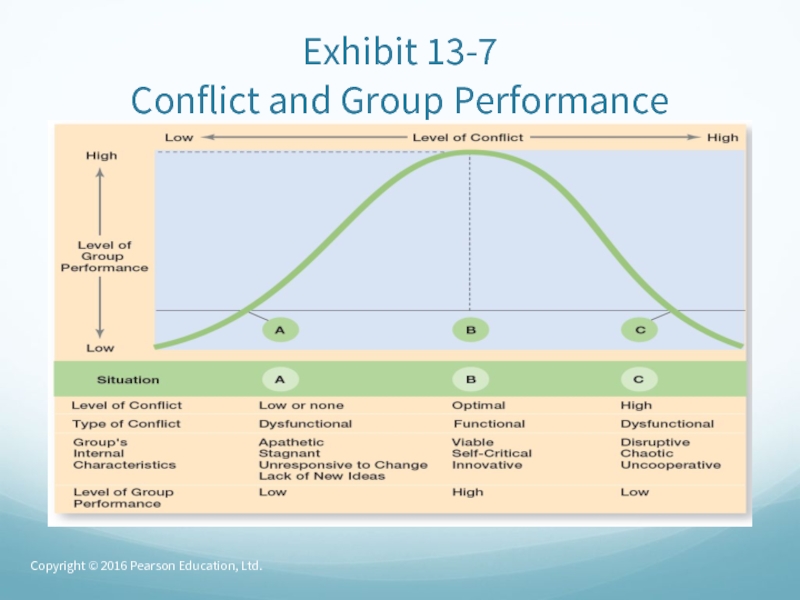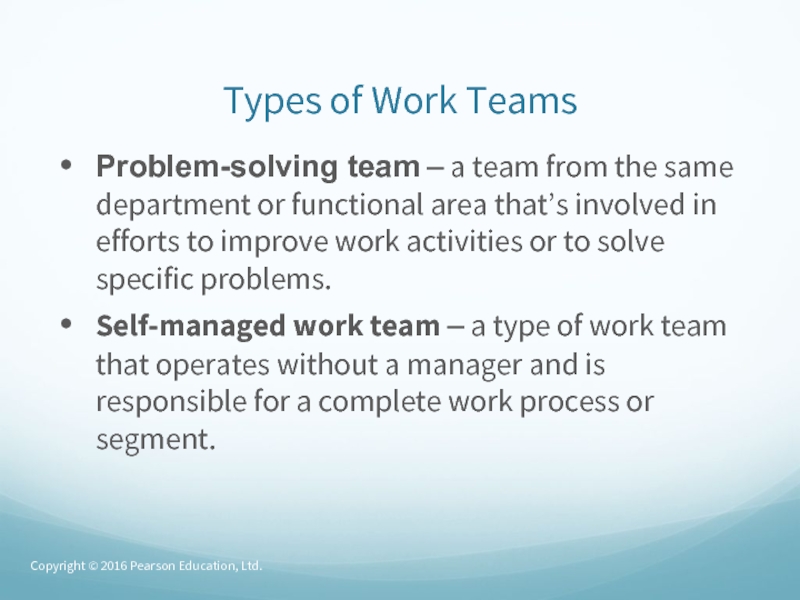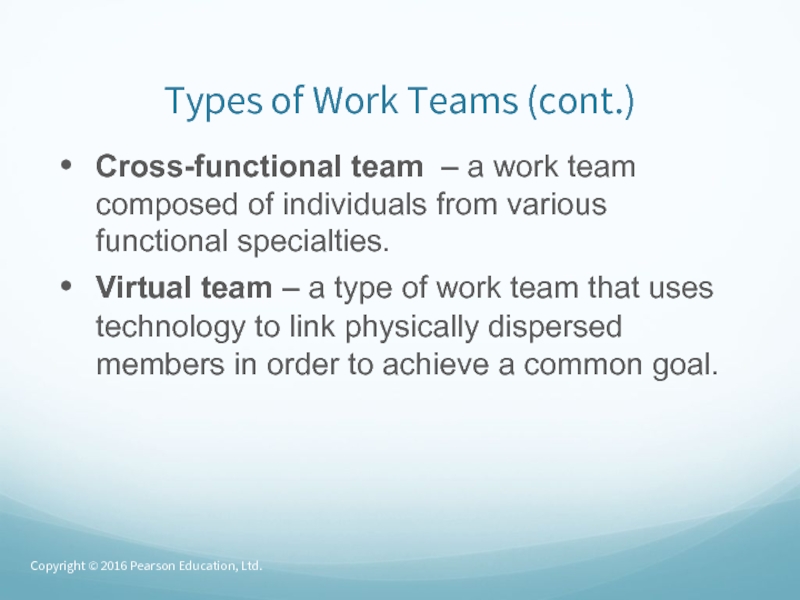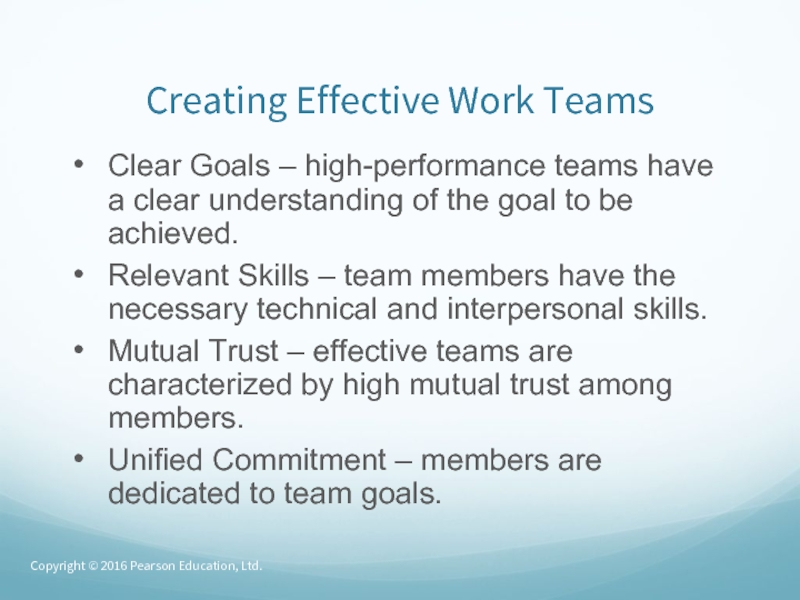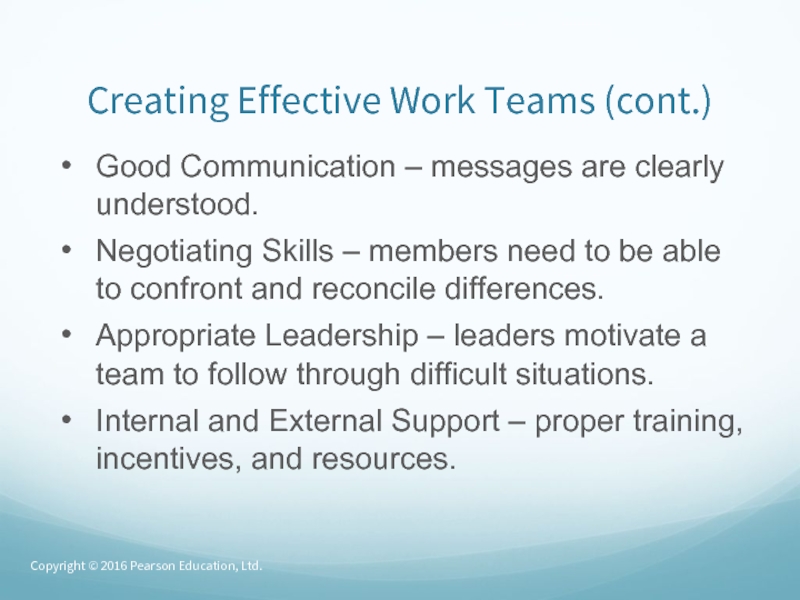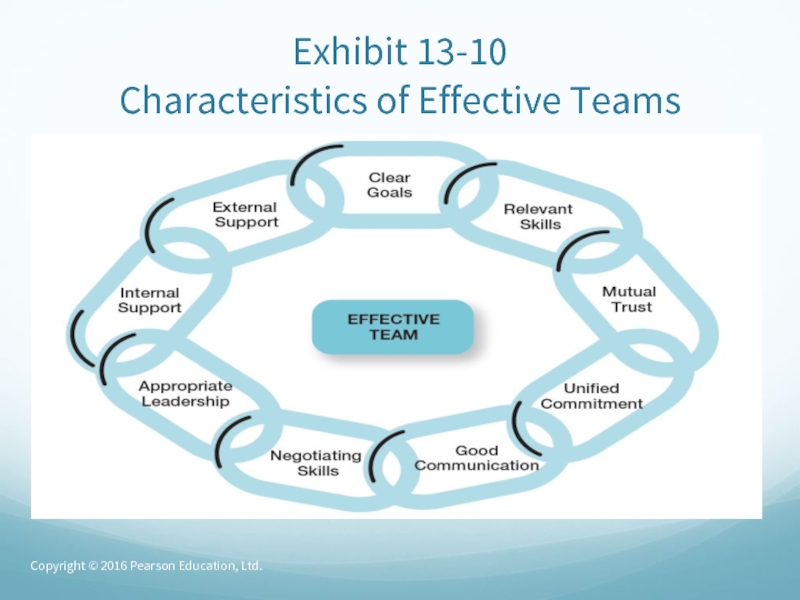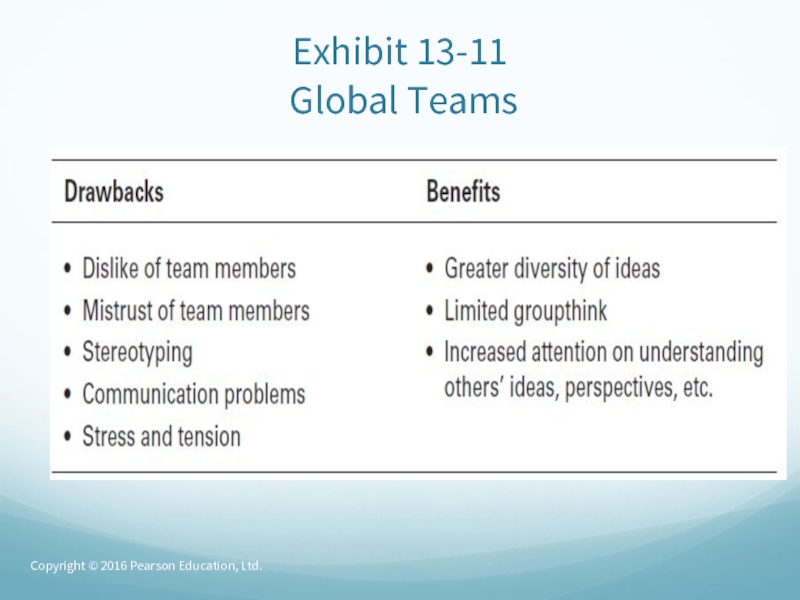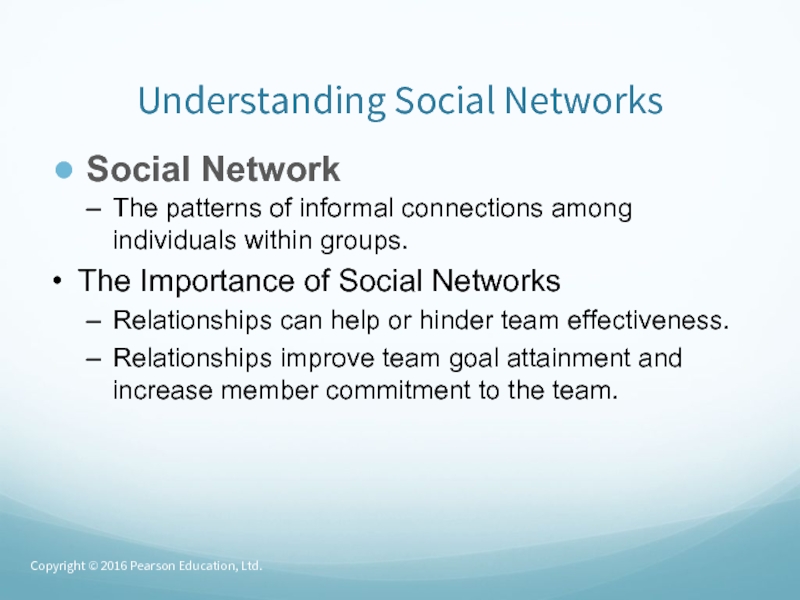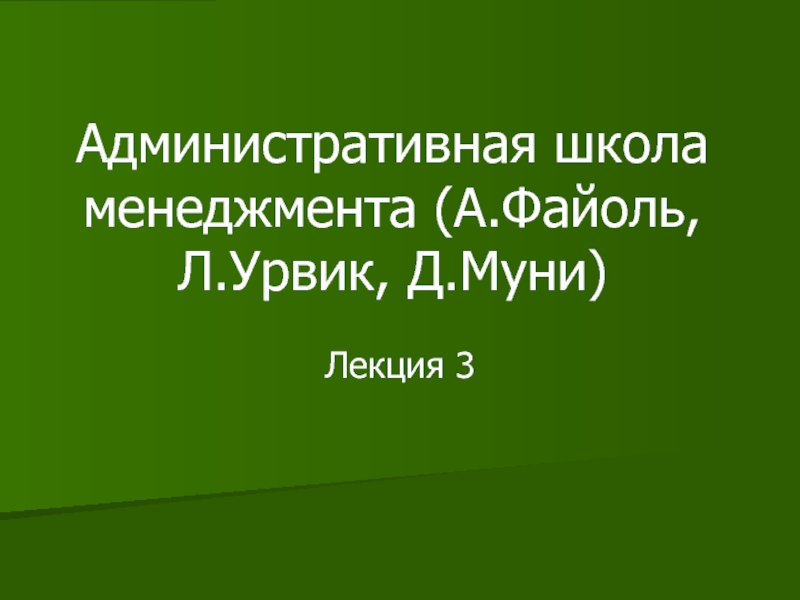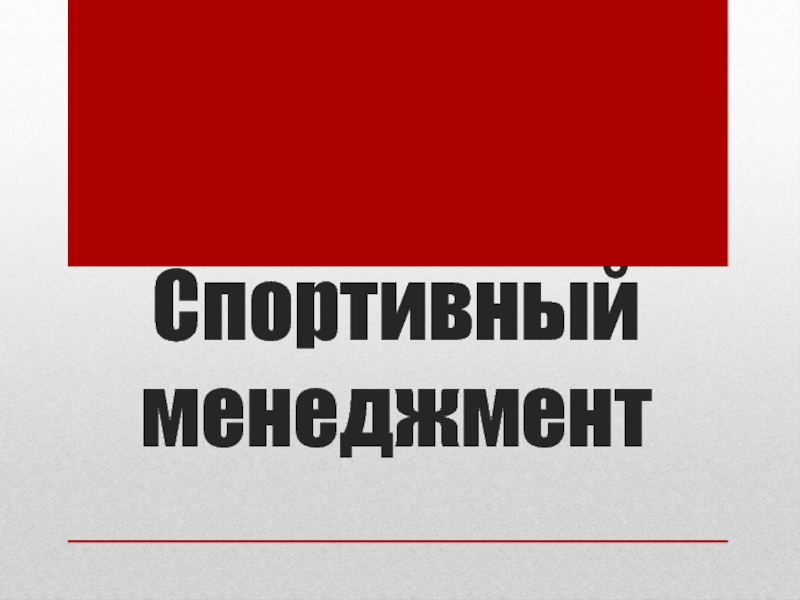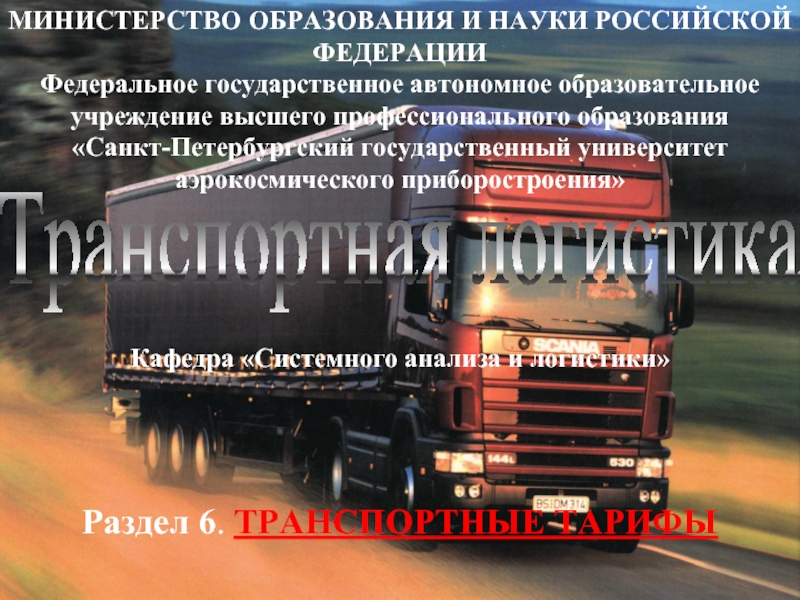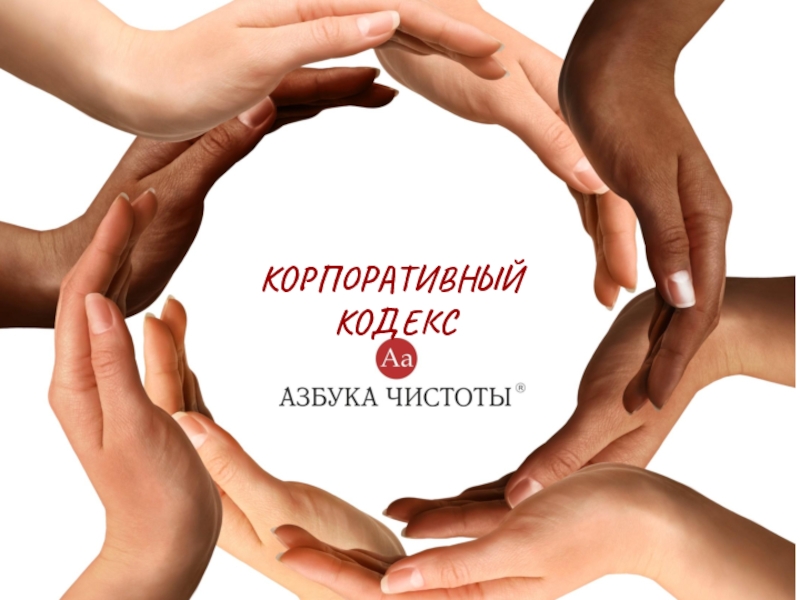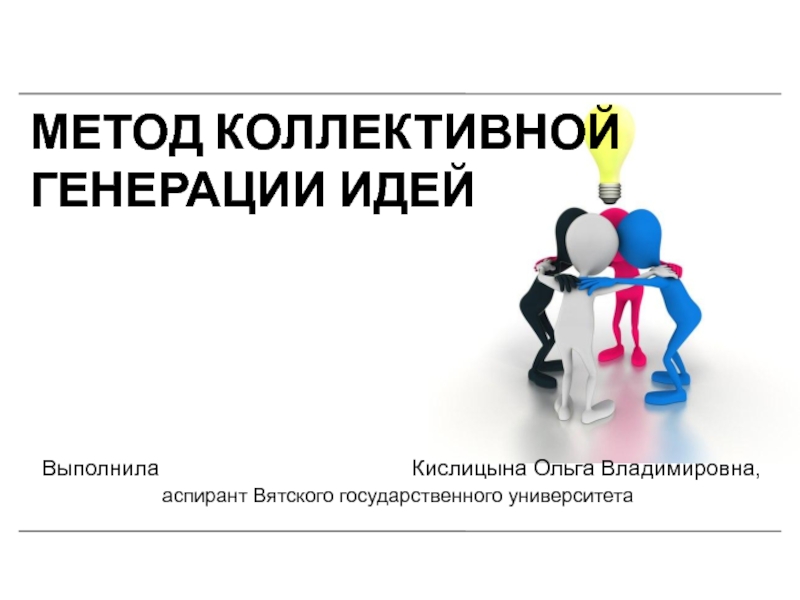Introduction to Management– Week 9
- Главная
- Разное
- Дизайн
- Бизнес и предпринимательство
- Аналитика
- Образование
- Развлечения
- Красота и здоровье
- Финансы
- Государство
- Путешествия
- Спорт
- Недвижимость
- Армия
- Графика
- Культурология
- Еда и кулинария
- Лингвистика
- Английский язык
- Астрономия
- Алгебра
- Биология
- География
- Детские презентации
- Информатика
- История
- Литература
- Маркетинг
- Математика
- Медицина
- Менеджмент
- Музыка
- МХК
- Немецкий язык
- ОБЖ
- Обществознание
- Окружающий мир
- Педагогика
- Русский язык
- Технология
- Физика
- Философия
- Химия
- Шаблоны, картинки для презентаций
- Экология
- Экономика
- Юриспруденция
Managing Human Resources. Creating and Managing Teams презентация
Содержание
- 2. Managing Human Resources
- 3. Learning Objectives Explain the importance of the
- 4. Why Is HRM Important? As a significant
- 5. Why Is HRM Important? (cont.) High –
- 6. Exhibit 12-1 High-Performance Work Practices Copyright © 2016 Pearson Education, Ltd.
- 7. Exhibit 12-2 HRM Process Copyright © 2016 Pearson Education, Ltd.
- 8. External Factors That Affect the HRM Process
- 9. External Factors That Affect the HRM Process
- 10. External Factors That Affect the HRM Process
- 11. Exhibit 12-3 Major HRM Laws Copyright © 2016 Pearson Education, Ltd.
- 12. Exhibit 12-3 Major HRM Laws (cont.) Copyright © 2016 Pearson Education, Ltd.
- 13. Exhibit 12-3 Major HRM Laws (cont.) Copyright © 2016 Pearson Education, Ltd.
- 14. Global HRM Laws Work councils – groups
- 15. External Factors That Affect the HRM Process
- 16. Human Resource Planning Human resource planning
- 17. Human Resource Planning (cont.) Job description –
- 18. Recruitment and Decruitment Recruitment – locating, identifying,
- 19. Exhibit 12-4 Recruiting Sources Copyright © 2016 Pearson Education, Ltd.
- 20. Exhibit 12-5 Decruitment Options Copyright © 2016 Pearson Education, Ltd.
- 21. Selection Selection
- 22. Exhibit 12-6 Selection Decision Outcomes Copyright © 2016 Pearson Education, Ltd.
- 23. Exhibit 12-7 Selection Tools Copyright © 2016 Pearson Education, Ltd.
- 24. Exhibit 12-7 Selection Tools (cont.) Copyright © 2016 Pearson Education, Ltd.
- 25. Exhibit 12-7 Selection Tools (cont.) Copyright © 2016 Pearson Education, Ltd.
- 26. Selection (cont.) Realistic
- 27. Providing Employees with Needed Skills and Knowledge
- 28. Exhibit 12-8 Types of Training Copyright © 2016 Pearson Education, Ltd.
- 29. Exhibit 12-9 Traditional Training Methods Copyright © 2016 Pearson Education, Ltd.
- 30. Exhibit 12-9 Traditional Training Methods (cont.) Copyright © 2016 Pearson Education, Ltd.
- 31. Retaining Competent, High Performing Employees Performance
- 32. Exhibit 12-10 Performance Appraisal Methods Copyright © 2016 Pearson Education, Ltd.
- 33. Exhibit 12-10: Performance Appraisal Methods (cont.) Copyright © 2016 Pearson Education, Ltd.
- 34. Exhibit 12-11 What Determines Pay and Benefits Copyright © 2016 Pearson Education, Ltd.
- 35. Contemporary Issues in Managing Human Resources Downsizing
- 36. Exhibit 12-12 Tips for Managing Downsizing Copyright © 2016 Pearson Education, Ltd.
- 37. Contemporary Issues in Managing Human Resources (cont.)
- 38. Contemporary Issues in Managing Human Resources (cont.)
- 39. Creating and Managing Teams
- 40. Learning Objectives Define groups and the stages
- 41. What Is a Group? Group
- 42. Exhibit 13-1 Examples of Formal Work Groups Copyright © 2016 Pearson Education, Ltd.
- 43. Stages of Group Development Forming stage –
- 44. Stages of Group Development (cont.) Performing stage
- 45. Exhibit 13-2 Stages of Group Development Copyright © 2016 Pearson Education, Ltd.
- 46. Work Group Performance and Satisfaction Why
- 47. Exhibit 13-3 Group Performance/Satisfaction Model Copyright © 2016 Pearson Education, Ltd.
- 48. External Conditions Imposed on the Group Work
- 49. Group Member Resources A group’s
- 50. Group Structure Role – behavior patterns expected
- 51. Group Structure (cont.) Status – a prestige
- 52. Exhibit 13-5 Group Cohesiveness and Productivity Copyright © 2016 Pearson Education, Ltd.
- 53. Group Structure (cont.) Group Size Small
- 54. Group Structure (cont.) Group Processes
- 55. Group Structure (cont.) Group Decision-making – most
- 56. Exhibit 13-6 Creative Group Decision Making Copyright © 2016 Pearson Education, Ltd.
- 57. Conflict Management Conflict
- 58. Conflict Management (cont.) Interactionist
- 59. Conflict Management (cont.) Task conflict – conflicts
- 60. Exhibit 13-7 Conflict and Group Performance Copyright © 2016 Pearson Education, Ltd.
- 61. Exhibit 13-8 Conflict-Management Techniques Copyright © 2016 Pearson Education, Ltd.
- 62. Turning Groups into Effective Teams Work
- 63. Exhibit 13-9 Groups Versus Teams Copyright © 2016 Pearson Education, Ltd.
- 64. Types of Work Teams Problem-solving team –
- 65. Types of Work Teams (cont.) Cross-functional team
- 66. Creating Effective Work Teams Clear Goals –
- 67. Creating Effective Work Teams (cont.) Good Communication
- 68. Exhibit 13-10 Characteristics of Effective Teams Copyright © 2016 Pearson Education, Ltd.
- 69. Current Challenges in Managing Teams Group
- 70. Exhibit 13-11 Global Teams Copyright © 2016 Pearson Education, Ltd.
- 71. Understanding Social Networks Social Network The
- 72. Thanks Questions
Слайд 1
Lecture 8
Managing Human Resources. Creating and Managing Teams
Course Instructor: Diana Amirbekova
March
Слайд 3Learning Objectives
Explain the importance of the human resource management process and
Discuss the tasks associated with identifying and selecting competent employees.
Know how to be a good interviewee.
Develop your skill at being a good interviewer.
Explain the different types of orientation and training.
Describe strategies for retaining competent, high-performing employees.
Discuss contemporary issues in managing human resources.
Copyright © 2016 Pearson Education, Ltd.
Слайд 4Why Is HRM Important?
As a significant source of competitive advantage:
People-oriented HR
As an important strategic tool
Achieve competitive success through people by treating employees as partners
To improve organizational performance
High performance work practices lead to both high individual and high organizational performance
Copyright © 2016 Pearson Education, Ltd.
Слайд 5Why Is HRM Important? (cont.)
High – performance work practices – work
Copyright © 2016 Pearson Education, Ltd.
Слайд 8External Factors That Affect the HRM Process
The Economy's Effect on HRM
The
U.S. workers have dramatically lowered their career and retirement expectations for the foreseeable future.
Copyright © 2016 Pearson Education, Ltd.
Слайд 9External Factors That Affect the HRM Process (cont.)
Employee Labor Unions
Labor union
Work stops, labor disputes, and negotiations between management and labor are just a few of the challenges organizations and managers face when their workforce is unionized
Copyright © 2016 Pearson Education, Ltd.
Слайд 10External Factors That Affect the HRM Process (cont.)
Legal Environment of HRM
Affirmative
Two current U.S. laws that each have the potential to affect future HRM practices:
Protection and Affordable Care Act (PPACA; commonly called the Health Care Reform Act)
Social Networking Online Protection Act (SNOPA)
Copyright © 2016 Pearson Education, Ltd.
Слайд 14Global HRM Laws
Work councils – groups of nominated or elected employees
Board representatives – employees who sit on a company’s board of directors and represent the interests of the firm’s employees.
Copyright © 2016 Pearson Education, Ltd.
Слайд 15External Factors That Affect the HRM Process (cont.)
Demographic Trends
The oldest, most
The baby boomers (those born between 1946 and 1964) make up 41.5 percent of the workforce.
Gen Xers (those born 1965 to 1977) make up almost 29 percent of the workforce.
Gen Yers (those born 1978 to 1994) make up almost 24 percent of the workforce.
Copyright © 2016 Pearson Education, Ltd.
Слайд 16Human Resource Planning
Human resource planning
Job analysis – an assessment that defines jobs and the behaviors necessary to perform them.
Copyright © 2016 Pearson Education, Ltd.
Слайд 17Human Resource Planning (cont.)
Job description – a written statement that describes
Job specification – a written statement of the minimum qualifications a person must possess to perform a given job successfully.
Copyright © 2016 Pearson Education, Ltd.
Слайд 18Recruitment and Decruitment
Recruitment – locating, identifying, and attracting capable applicants.
Decruitment –
Copyright © 2016 Pearson Education, Ltd.
Слайд 21Selection
Selection
A valid selection device is characterized by a proven relationship between the selection device and some relevant criterion.
A reliable selection device indicates that it measures the same thing consistently.
Copyright © 2016 Pearson Education, Ltd.
Слайд 26Selection (cont.)
Realistic
Copyright © 2016 Pearson Education, Ltd.
Слайд 27Providing Employees with Needed
Skills and Knowledge
Orientation
Employee Training is an important HRM activity.
In 2011, U.S. business firms spent more than $59 billion on formal employee training.
Copyright © 2016 Pearson Education, Ltd.
Слайд 31Retaining Competent,
High Performing Employees
Performance management system
Skill-based pay – a pay system that rewards employees for the job skills they can demonstrate.
Variable pay – a pay system in which an individual’s compensation is contingent on performance.
Copyright © 2016 Pearson Education, Ltd.
Слайд 33Exhibit 12-10:
Performance Appraisal Methods (cont.)
Copyright © 2016 Pearson Education, Ltd.
Слайд 35Contemporary Issues in Managing
Human Resources
Downsizing – the planned elimination of jobs
Sexual harassment – any unwanted action or activity of a sexual nature that explicitly or implicitly affects an individual’s employment, performance, or work environment.
Copyright © 2016 Pearson Education, Ltd.
Слайд 37Contemporary Issues in Managing
Human Resources (cont.)
Family
Copyright © 2016 Pearson Education, Ltd.
Слайд 38Contemporary Issues in Managing
Human Resources (cont.)
Employee Health Care Costs – since
Employee Pension Plan Costs – pension commitments have become such an enormous burden that companies can no longer afford them. In fact, the corporate pension system has been described as “fundamentally broken.”
Copyright © 2016 Pearson Education, Ltd.
Слайд 40Learning Objectives
Define groups and the stages of group development.
Describe the major
Define teams and best practices influencing team performance.
Know how to maximize outcomes through effective negotiating.
Develop your skill at coaching team members.
Discuss contemporary issues in managing teams.
Copyright © 2016 Pearson Education, Ltd.
Слайд 41What Is a Group?
Group
Formal groups
Work groups defined by the organization’s structure that have designated work assignments and tasks.
Informal groups
Groups that are independently formed to meet the social needs of their members.
Copyright © 2016 Pearson Education, Ltd.
Слайд 43Stages of Group Development
Forming stage – the first stage of group
Storming stage – the second stage of group development, characterized by intragroup conflict.
Norming stage – the third stage of group development, characterized by close relationships and cohesiveness.
Copyright © 2016 Pearson Education, Ltd.
Слайд 44Stages of Group Development (cont.)
Performing stage – the fourth stage of
Adjourning – the final stage of group development for temporary groups during which group members are concerned with wrapping up activities rather than task performance.
Copyright © 2016 Pearson Education, Ltd.
Слайд 46Work Group Performance and Satisfaction
Why are some groups more successful
The abilities of the group’s members
The size of the group
The level of conflict
The internal pressures on members to conform to the group’s norms
Copyright © 2016 Pearson Education, Ltd.
Слайд 48External Conditions Imposed on the Group
Work groups
The organization’s strategy
Authority relationships
Formal rules and regulations
Availability of resources
Employee selection criteria
The performance management system and culture
The general physical layout of the group’s work space
Copyright © 2016 Pearson Education, Ltd.
Слайд 49Group Member Resources
A group’s
Knowledge
Abilities
Skills
Personality traits
Copyright © 2016 Pearson Education, Ltd.
Слайд 50Group Structure
Role – behavior patterns expected of someone occupying a given
Norms – standards or expectations that are accepted and shared by a group’s members.
Groupthink – when a group exerts extensive pressure on an individual to align his or her opinion with that of others.
Copyright © 2016 Pearson Education, Ltd.
Слайд 51Group Structure (cont.)
Status – a prestige grading, position, or rank within
Social loafing – the tendency for individuals to expend less effort when working collectively than when working individually.
Group cohesiveness – the degree to which group members are attracted to one another and share the group’s goals.
Copyright © 2016 Pearson Education, Ltd.
Слайд 53Group Structure (cont.)
Group Size
Small groups are faster than larger ones at
Large groups consistently get better problem solving results than smaller ones
Amazon founder and CEO Jeff Bezos uses a “two-pizza” philosophy; that is, a team should be small enough that it can be fed with two pizzas.
Copyright © 2016 Pearson Education, Ltd.
Слайд 54Group Structure (cont.)
Group Processes
Communication
Decision-making
Conflict management
Copyright © 2016 Pearson Education, Ltd.
Слайд 55Group Structure (cont.)
Group Decision-making – most organizations use groups to make
Advantages of group decision-making
More complete information and knowledge
A diversity of experience and perspectives
Increased acceptance of a solution
Disadvantages of group decision-making
Groups almost always take more time to reach a solution
Dominant and vocal minority can influence the decision
Groupthink
Copyright © 2016 Pearson Education, Ltd.
Слайд 57Conflict Management
Conflict
Traditional view of conflict – the view that all conflict is bad and must be avoided.
Human relations view of conflict – the view that conflict is a natural and inevitable outcome in any group.
Copyright © 2016 Pearson Education, Ltd.
Слайд 58Conflict Management (cont.)
Interactionist
Functional conflicts – conflicts that support a group’s goals and improve its performance.
Dysfunctional conflicts – conflicts that prevent a group from achieving its goals.
Copyright © 2016 Pearson Education, Ltd.
Слайд 59Conflict Management (cont.)
Task conflict – conflicts over content and goals of
Relationship conflict – conflict based on interpersonal relationships.
Process conflict – conflict over how work gets done.
Copyright © 2016 Pearson Education, Ltd.
Слайд 62Turning Groups into
Effective Teams
Work teams
Copyright © 2016 Pearson Education, Ltd.
Слайд 64Types of Work Teams
Problem-solving team – a team from the same
Self-managed work team – a type of work team that operates without a manager and is responsible for a complete work process or segment.
Copyright © 2016 Pearson Education, Ltd.
Слайд 65Types of Work Teams (cont.)
Cross-functional team – a work team composed
Virtual team – a type of work team that uses technology to link physically dispersed members in order to achieve a common goal.
Copyright © 2016 Pearson Education, Ltd.
Слайд 66Creating Effective Work Teams
Clear Goals – high-performance teams have a clear
Relevant Skills – team members have the necessary technical and interpersonal skills.
Mutual Trust – effective teams are characterized by high mutual trust among members.
Unified Commitment – members are dedicated to team goals.
Copyright © 2016 Pearson Education, Ltd.
Слайд 67Creating Effective Work Teams (cont.)
Good Communication – messages are clearly understood.
Negotiating
Appropriate Leadership – leaders motivate a team to follow through difficult situations.
Internal and External Support – proper training, incentives, and resources.
Copyright © 2016 Pearson Education, Ltd.
Слайд 69Current Challenges in
Managing Teams
Group Member Resources in Global Teams –
Group Structure – issues include conformity, status, social loafing, and cohesiveness.
Group Processes – multicultural global team is better able to capitalize on the diversity of ideas.
Copyright © 2016 Pearson Education, Ltd.
Слайд 71Understanding Social Networks
Social Network
The patterns of informal connections among individuals within
The Importance of Social Networks
Relationships can help or hinder team effectiveness.
Relationships improve team goal attainment and increase member commitment to the team.
Copyright © 2016 Pearson Education, Ltd.
